Tweed’s History, Charm, &Versatility Will Surprise You!
Tweed often gets unfairly labeled as a niche fabric, reserved for aging northeastern college professors or English gentry in the Scottish dells. This stereotype paints it as itchy, stuffy, and old-fashioned. This is an ironic misconception, considering the remarkable role that tweed has played in Classic Style!
In fact, tweed is a versatile and stylish fabric that could be the perfect addition to your wardrobe, especially if you require garments that are insulating and durable but also visually interesting.
The Well-Dressed Have Always Loved Tweed!
Tweeds have been worn by tastemakers and movie stars for centuries, and after learning about the history of tweed, its many varieties, and how to wear it today, we think that you will agree that there is nothing stuffy or stodgy about this remarkable fabric.

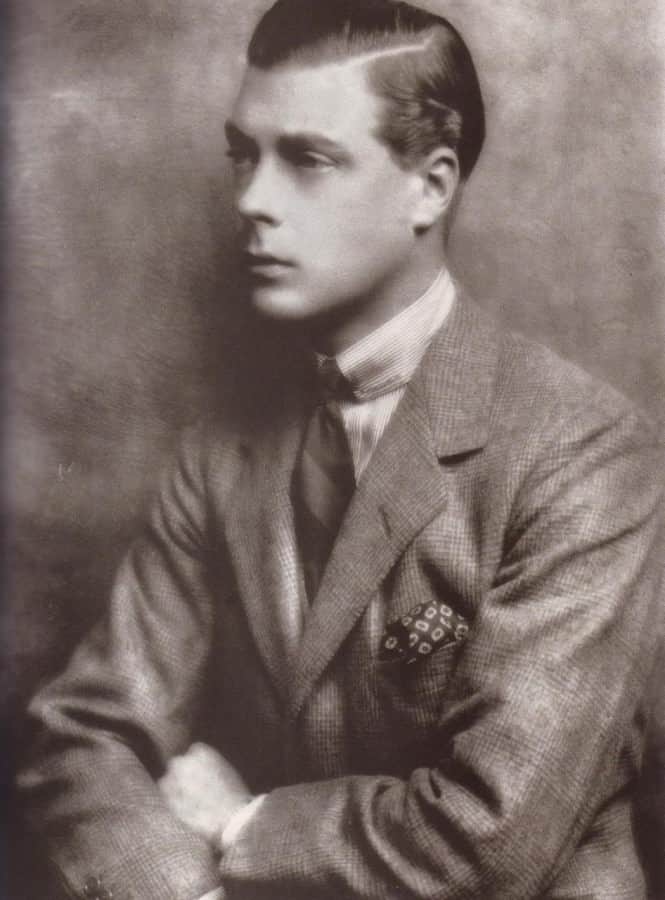
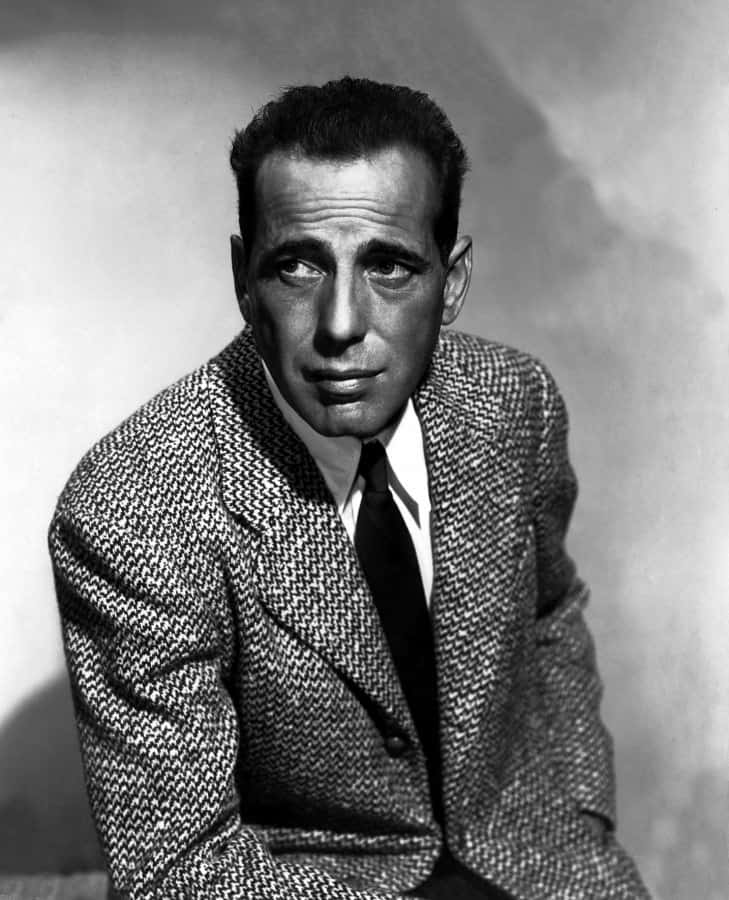
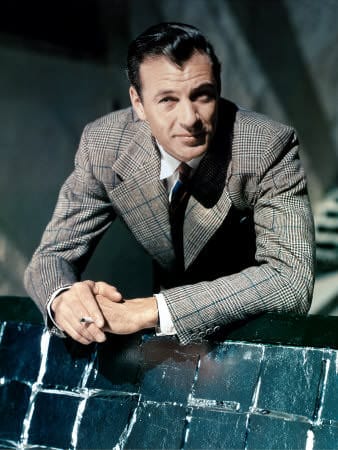
Read on to discover the curiously compelling story of tweed and how to include tweed as part of your personal style.
Master all fabric types!
The History of Tweed
Tweed Began as a Working Man’s Fabric
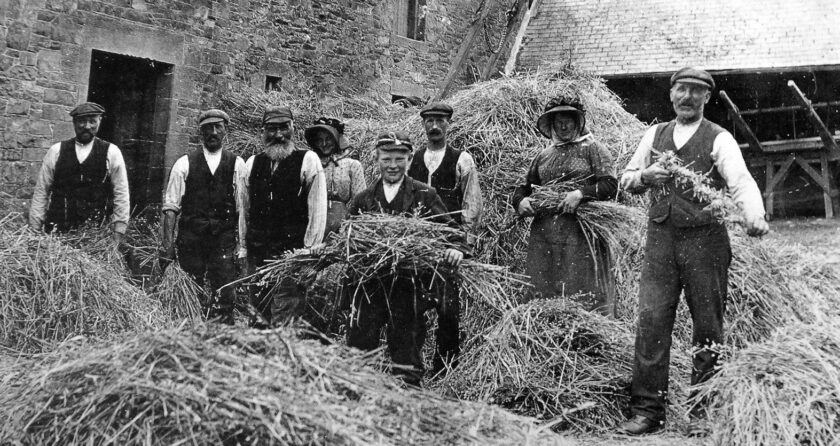
Tweed developed from the homemade, heavy-duty fabrics made in Scotland and Ireland as a way for the farmers and workmen there to battle the chilly, damp climate that characterizes those regions. This fabric was hand-woven and rough, thick, and felted, with muted and earthy colors derived from the most basic dyes. It was truly a working man’s cloth.
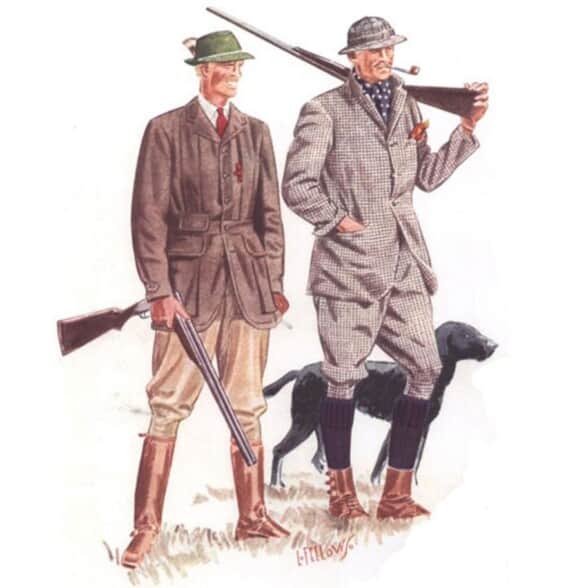
Tweed was an early form of
Camouflage
Tweed is known for its stubby, mottled appearance that features tiny flecks of color in an organic, irregular pattern. Because tweed is usually made with earth-toned colors, this mottled effect causes the material and its wearer to partially blend into the background if the colors of the tweed match the local flora and geology. For centuries, Scottish and Irish hunters have used this fact to employ tweed as a kind of primitive camouflage.
Originally relatively plain and extremely utilitarian, tweed began to develop certain patterns and colors inspired by the earthy landscapes of the Scottish Highlands and Lowlands, drawing from the color palette, or should we say “colour palette,” of Ireland and the northern reaches of the United Kingdom.
Thinking about Downton Abbey right now?
The Origins of the Term “Tweed”
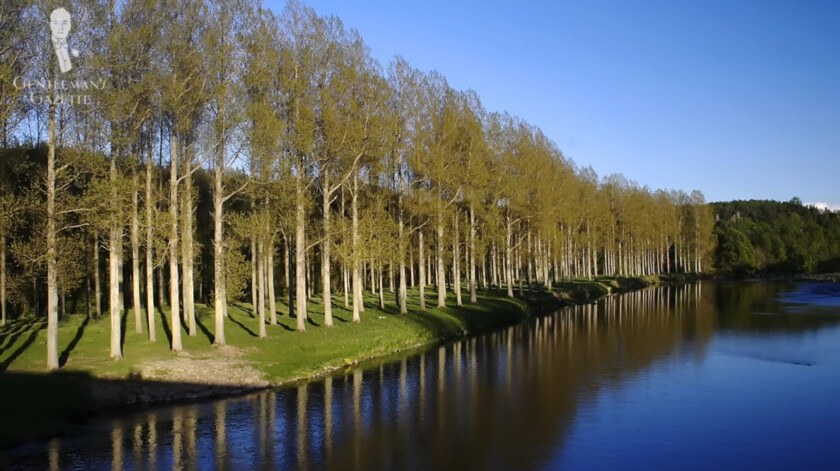
There are two popular theories for the origins of the term “Tweed.”
| The Tweed Valley | Corruption of “Tweel” |
|---|---|
| Although crafted throughout Scotland, this theory posits that the fabric was especially associated with the Tweed Valley and River Tweed that flows near the border between Scotland and northern England. | “Tweel” is the Scottish word for “twill.” Allegedly, a London shop clerk in 1826 received an order of twill fabric labeled “tweel.” Not knowing what “tweel” was, the shopkeeper assumed that it was a misspelling of Tweed, the river and valley in Scotland. He sold the twill under the name “Tweed,” and the name stuck! |
Tweed Becomes the Preferred Sporting Fabric for Gentlemen
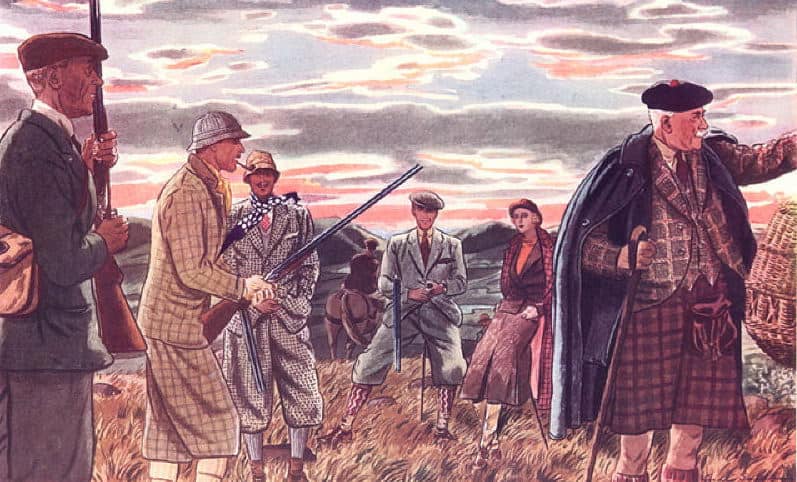
Because tweed is a rugged fabric, resistant to wind and water, with excellent insulating properties, it was soon almost ubiquitous during cool and cold weather conditions in Scotland and parts of Ireland.
The wearing of tweed entered a new phase when, in the first half of the nineteenth century, many estates in Scotland were acquired by English noblemen wishing to expand their life of leisure. Prince Albert, the husband of Queen Victoria of Great Britain, is notably credited with popularizing Scotland as a shooting and hunting destination.
“Small but pretty ….All seemed to breathe freedom and peace, and to make one forget the world and its sad turmoils.”
Queen Victoria, on Balmoral Castle
Albert was among the first English gentlemen to wear tweed for sports. He created a unique pattern called Balmoral Tweed, named after his Scottish estate. Its colors reflect the local landscape. Balmoral Tweed is an early example of Estate Tweeds, patterns made by landowners to represent their estates.
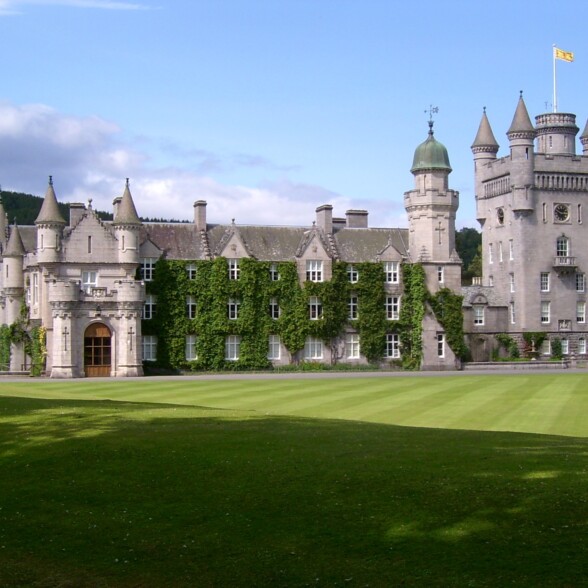
Balmoral Castle Inspired
Balmoral Tweed
Although Prince Albert moved into Balmoral Castle in 1853, he had been developing his personal Balmoral Tweed for years. Blue with white sprinkles and crimson in color, it was no coincidence that it looks gray from afar, resembling the granite mountains of Aberdeenshire around Balmoral. It was designed for deer stalking in the area.
The Differences Between Estate Tweeds and Clan Tartan Tweeds

Tweed is available in various patterns, but two of the most meaningful classifications are the aforementioned Estate Tweeds and Clan Tartan Tweeds. Both patterns are examples of tweeds, but they have very different significance.
A Clan Tartan Tweed is a particular pattern of tweed that is used to identify members of the same family and does not necessarily relate to geographic location. It is similar, therefore, to the tartan patterns on traditional Scottish kilts.
An Estate Tweed is a particular pattern used to identify people who live and work on the same estate, regardless of whether they are related or not.
The Rising Popularity of Unique Tweeds
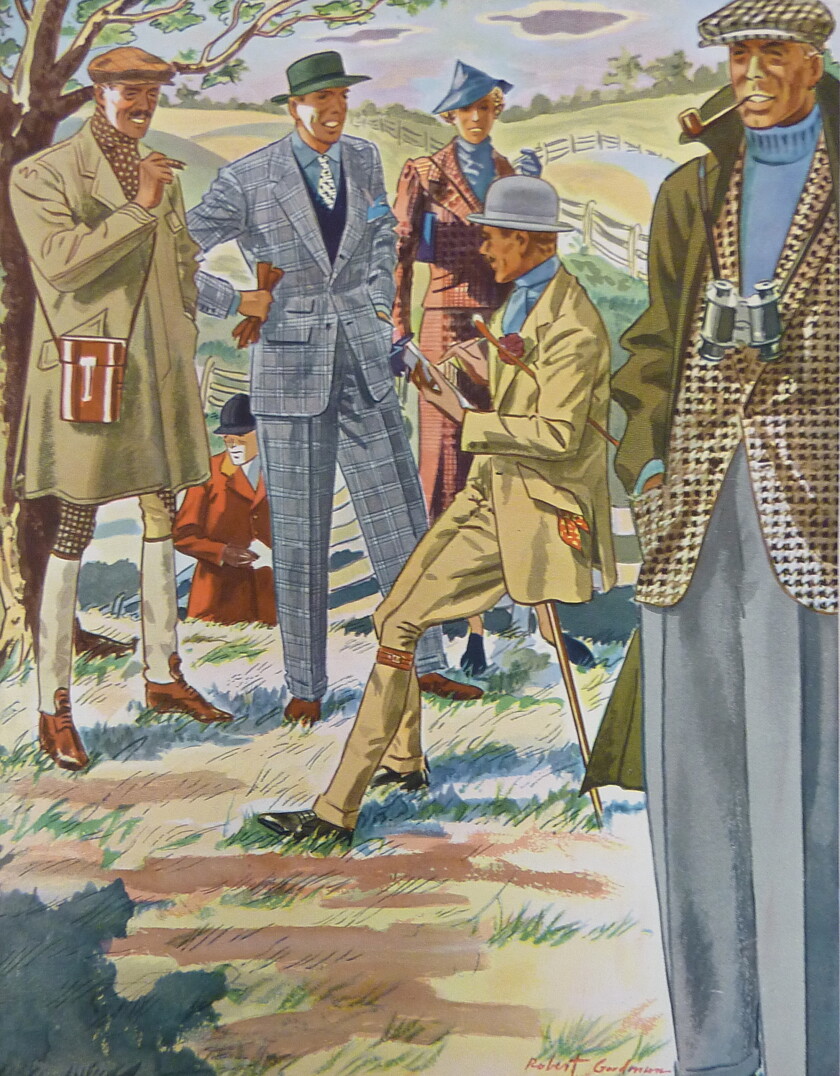
British noblemen and gentry embraced both tartans and estate tweeds as unique ways to showcase their wealth and status. They focused on developing new tweeds that were distinctive and identifiable while remaining practical: after all, the tweed was still employed as camouflage for hunting and deer stalking. As such, the colors continued to be derived from the land itself, and even the brightest were designed to blend in with the heather, timber, and rocky terrain.

Those who aspired to a similar standard of living to the English gentry in the United Kingdom began to employ tweed patterns as well. In 1874, the New York Gun Club adopted a variation on the Coigach estate tweed as its official livery. The Club modified the tweed using two alternating darker colors together with the white of the Shepherd check, thereby templating what is now known as the Gun Club check.
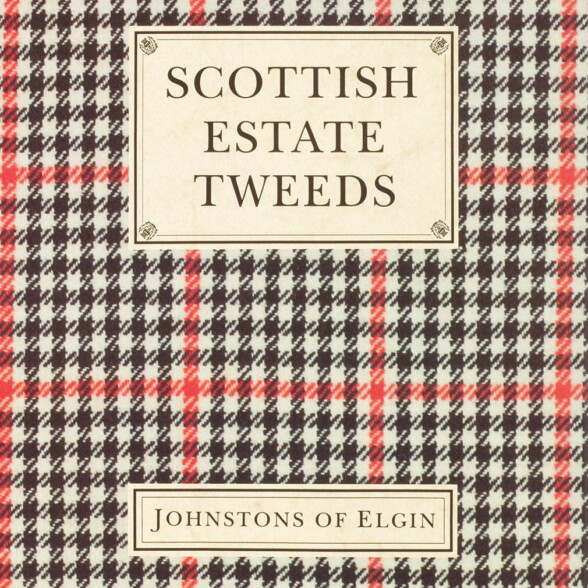
The first estate tweed
Glenfeshie
In Scottish Estate Tweeds, the author identifies Glenfeshie as the first estate tweed. Commissioned around 1835, it was worn by the estate’s ghillies, who acted as assistants to fishers and hunters, and keepers, who were responsible for maintaining and protecting the land. The Glenfeshie was modified from a basic black and white check worn by the estate’s shepherds overlaid with a red windowpane.
The variety of patterns and colors of tweed found today owe much to the originality of those 19th-century estate owners. Although these patterns were once restricted only to family members and workers of the estate, much like the regimental tie or school crest, today, anyone can wear them.
Learn more about patterns in menswear
Tweed was the Performance Fabric of Its Age
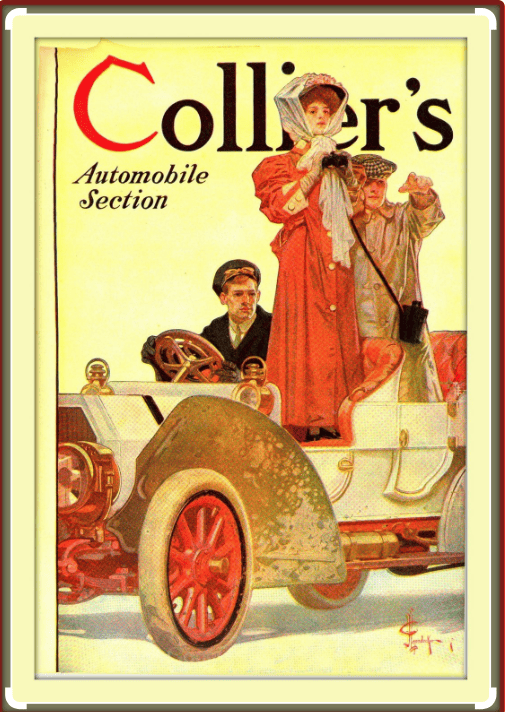
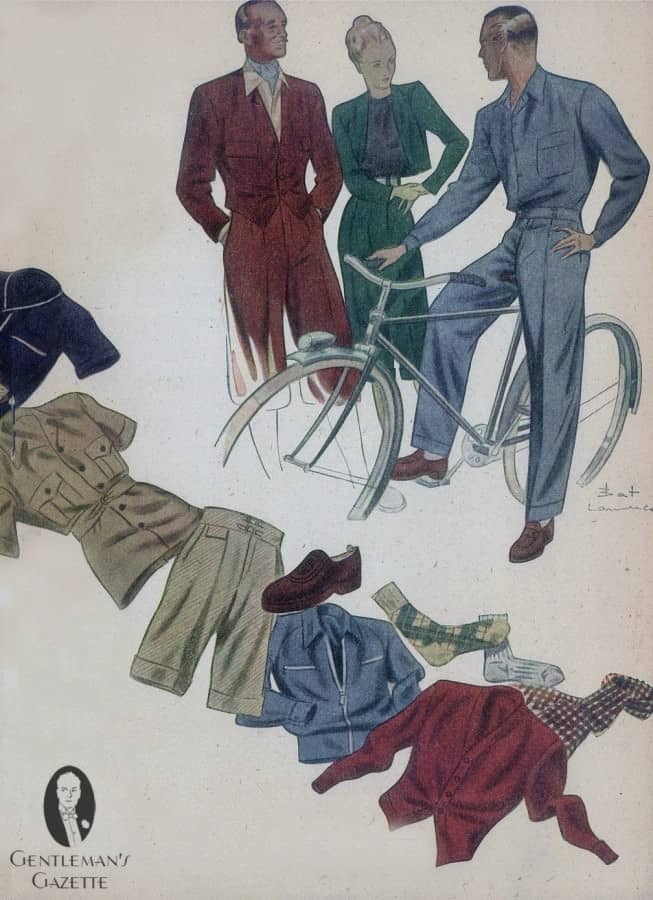
Tweed was the ideal sporting attire of the 19th and early 20th-century gentleman, and as such, it was the performance fabric of its time. The English gentry quickly adopted tweed as the favored outdoor cloth on their upcountry estates. Wearing tweed made hunting, shooting, and fishing comfortably enjoyable pastimes.
“Look here, are you going to be late? If you get a puncture eight miles off and have to walk home, what then? I don’t trust these bicycles: I shall tell them to give us cold things to eat.”
From A View from a Hill by M.R. James
In the 19th century, Victorian middle-class people started wearing tweed because they linked it with the leisure activities of the aristocracy. They wore it for almost every sport and adventure, like golf, cycling, tennis, driving, and even mountain climbing.
Tweed on the Battlefield
The durability of tweed was such that it even found its way onto the battlefield. It is a little-known ironic fact of history that during the Boer War, the Boers, in fighting against the British in their desperate struggle, overwhelmingly clothed themselves in tweed!
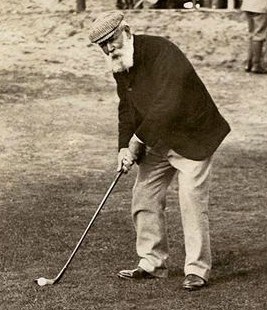
The look of the
Linksman
Early golfers such as Old Tom Morris only played golf in tweed because the fabric could stand up to extensive walking, did not restrict movement, and was sufficiently insulating to ensure comfort on even the chilliest of days.
The wearing of tweed for golf was nearly ubiquitous up until the 1930s when summer flannel pants and polos started becoming more popular. However, many tweed patterns are still associated with golf, appearing on caps and on golf bags.
Tweed truly was the cloth for all things sports and outdoors back in the day. It was perfectly adapted to country pursuits, as opposed to the darker wool suits worn in the city. This distinction between the leisure-based, earthy-colored tweed and business-focused gray, dark blue, and black suits perhaps gave rise to the so-called “no brown in town” rule, which has mostly gone by the wayside with the possible exception of London.
Learn about classic golf attire!
Tweed FAQ
What is tweed?
Tweed is a rough wool fabric with a soft and open texture that is known for its flexibility, durability, and ability to insulate. It is usually woven tightly woven with a plain, twill, or herringbone weave. The dye palette is traditionally muted, drawn mainly from earth tones. Tweed is closely associated with the United Kingdom, especially Scotland.
Is tweed a seasonal fabric?
Tweed should be worn whenever it is cool and cold; it is simply too heavy for hot weather conditions. It can, however, be an exceptional option for transitional weather.
What makes tweed a unique fabric?
Tweed is known for its unique blend of warmth, durability, and texture. It is woven with various colored yarns to create a distinct pattern, resulting in a visually appealing fabric that stands out from other materials.
Is tweed associated with the upper classes and Old Money?
Although tweed was originally developed as a working-class garment, it was adopted by the upper classes for leisurely and sporting pursuits because it was hard-wearing and comfortable while outdoors. Nowadays, however, tweed can be enjoyed by anyone who appreciates its timeless appeal.
Is tweed on trend?
Yes, tweed has made a stylish comeback in recent years. Its classic charm and versatility have allowed it to regain popularity among fashion enthusiasts. Whether you prefer a traditional or contemporary look, tweed can effortlessly add a touch of sophistication to your attire.
Is it okay for a young person to wear tweed?
Absolutely! Age should not restrict anyone from embracing tweed as a fashion choice. Young individuals can effortlessly incorporate tweed into their wardrobe, creating elegant styles and polished outfits suitable for various occasions.
Is tweed a versatile clothing material for a jacket?
Yes, tweed is highly versatile when it comes to jackets. Its natural insulation and sturdy composition make it an excellent choice for outerwear. Whether paired with jeans for a casual look or dressed up with tailored trousers, a tweed jacket adds a touch of refinement to any outfit.
Why are some tweeds more expensive than others?
Tweed’s higher price point can be attributed to several factors. First, the production process involves intricate weaving techniques and the use of high-quality wool fibers, leading to increased manufacturing costs. Additionally, the exclusivity and craftsmanship associated with renowned tweed manufacturers contribute to its perceived value and higher price tag.
Types of Tweed
Tweed Is Categorized by Source, Qualities, and Use
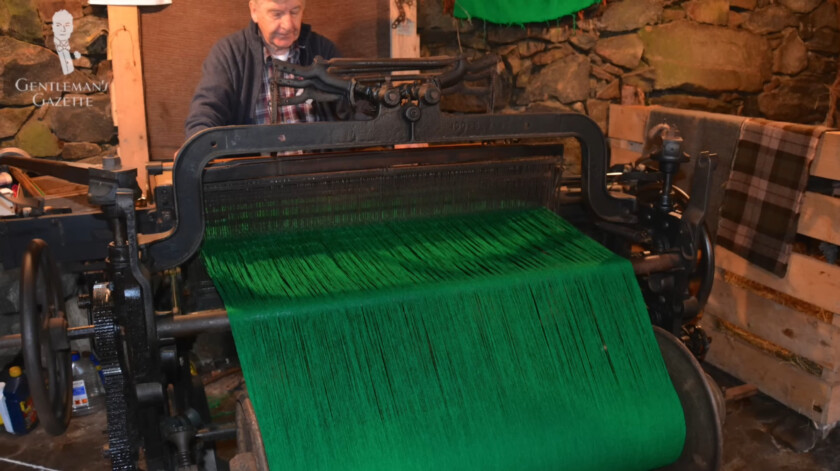
Tweed can be sorted in different ways. Some types are named after the sheep that produced the wool, others after the region they come from. Some are linked to brand names, while others are named for their function or the professions of those who wore them.
Tweed Named After Varieties of Sheep
Cheviot Tweed
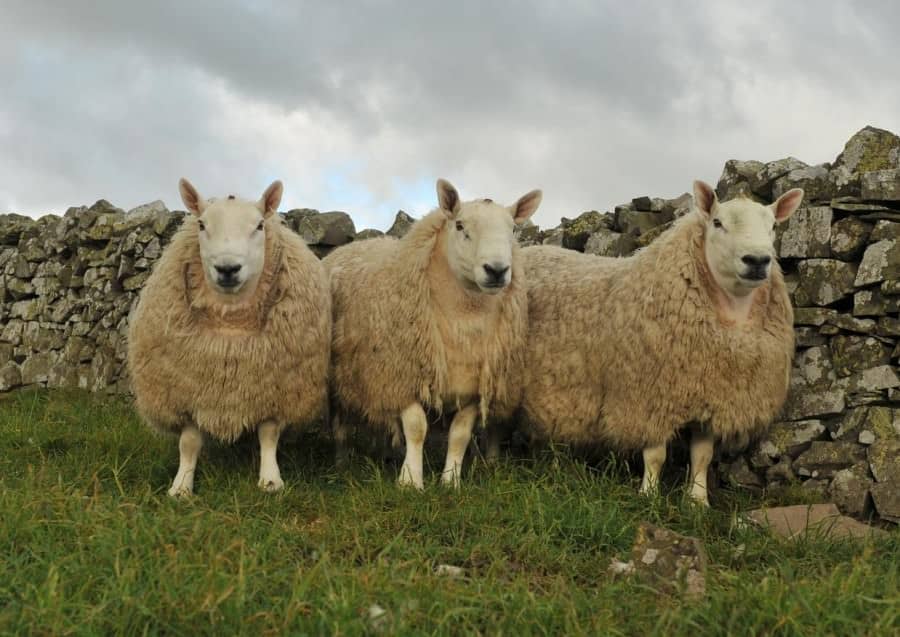
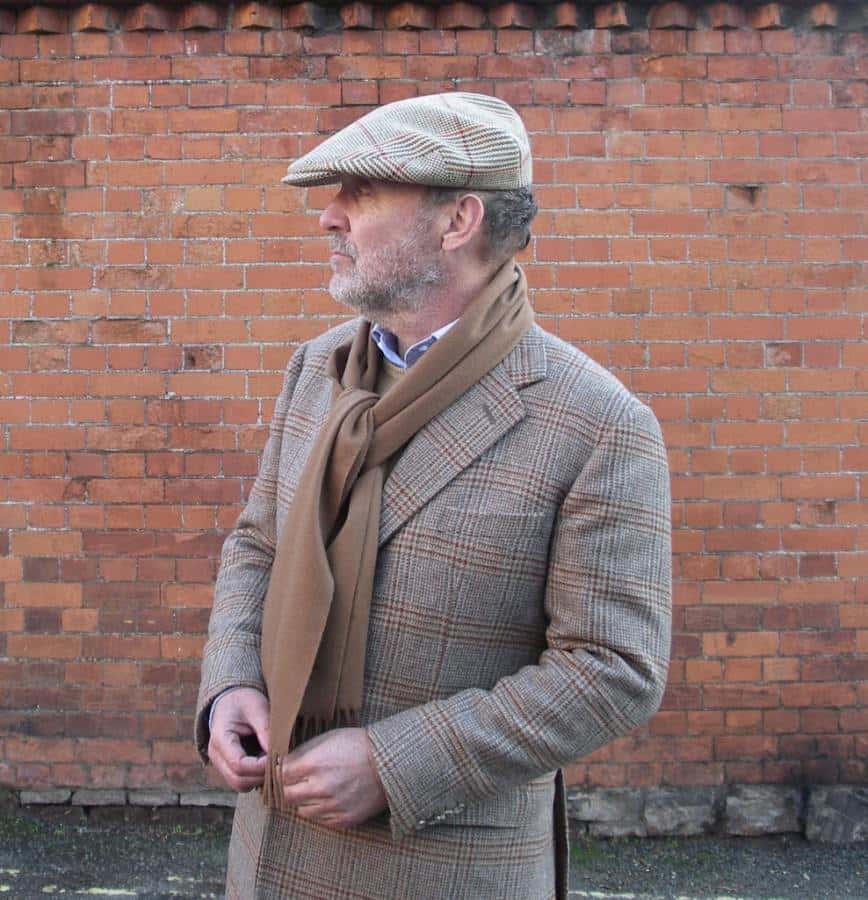
Cheviot Tweed is named after a breed of white-faced sheep first kept in the Cheviot hills of Northumberland and the Scottish borders. Cheviot yarn is generally larger, rougher, and heavier than other types of tweed. It is a stiff fabric with a certain “sharpness” to the touch and a bright luster. Cheviot fabric usually is woven more tightly, making it well suited for country wear due to its firmness and durability and city wear due to its ability to drape well and hold a crease.
Shetland Tweed
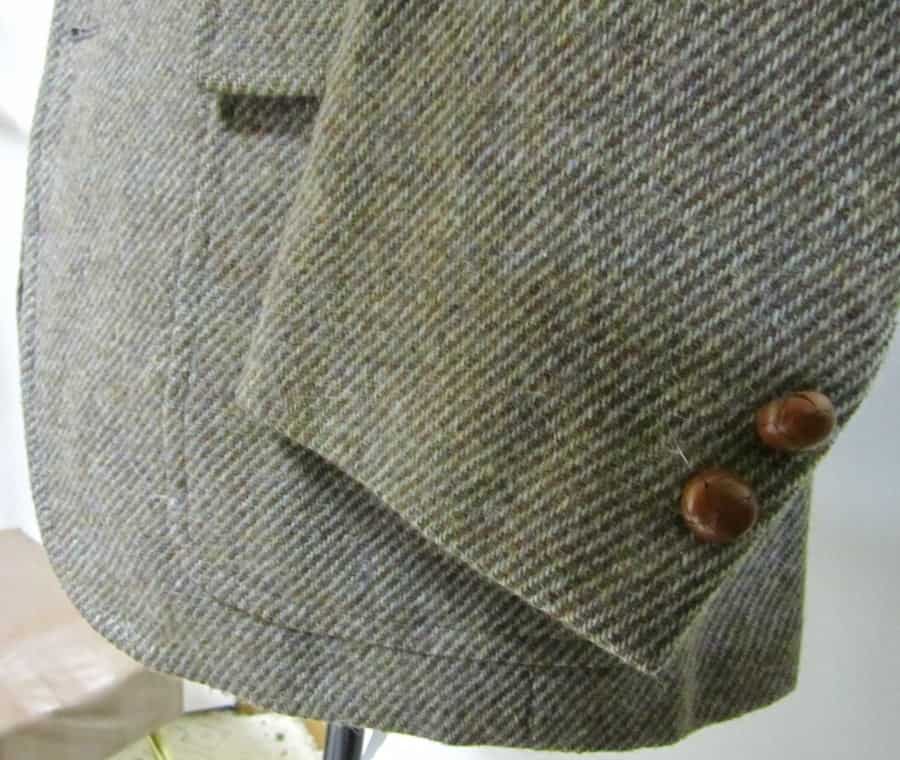
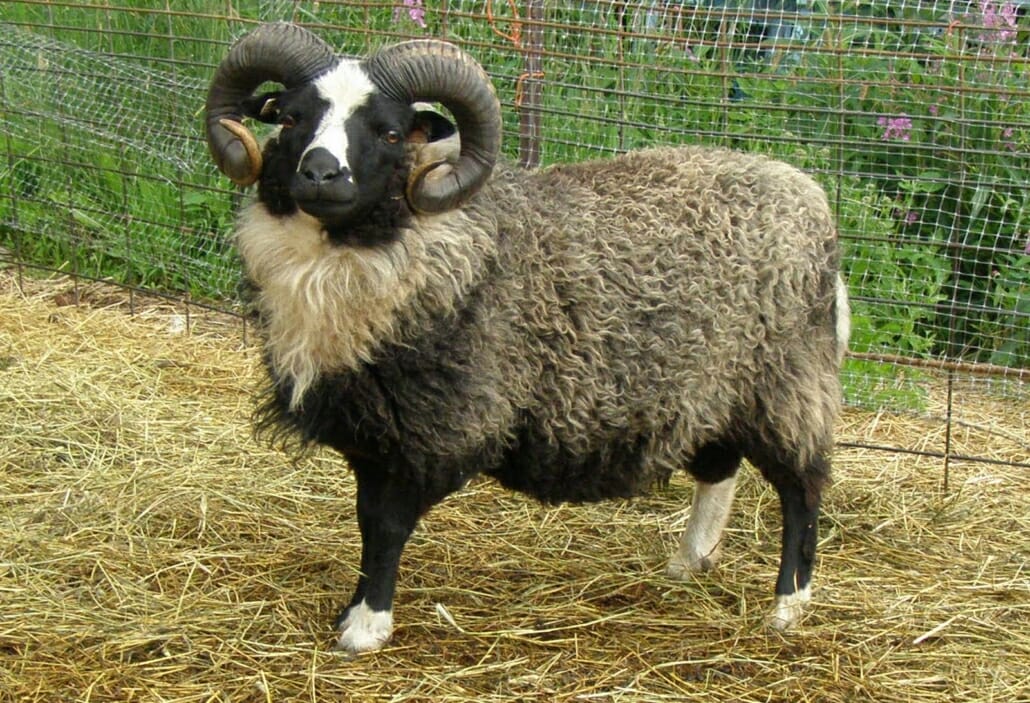
Shetland tweed was originally woven from sheep raised on islands of the same name, from which also hails the famous ponies. This wool is very fine, soft, and has a slightly shaggy texture. It’s the perfect casual tweed for a relaxed, laid-back style during cooler months.
Geographically Named Tweed
Donegal Tweed
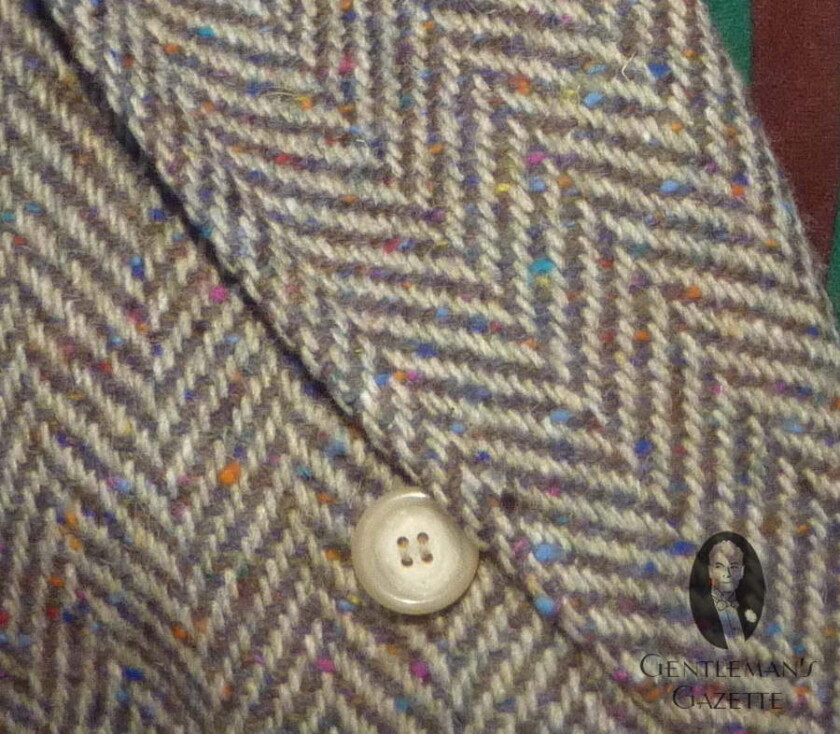
The name of this tweed is derived from the Irish county of Donegal. The fabric is coarse, which produces a rustic look, and features contrast-colored specks known as “neps” or “slubs” that appear sporty and casual.
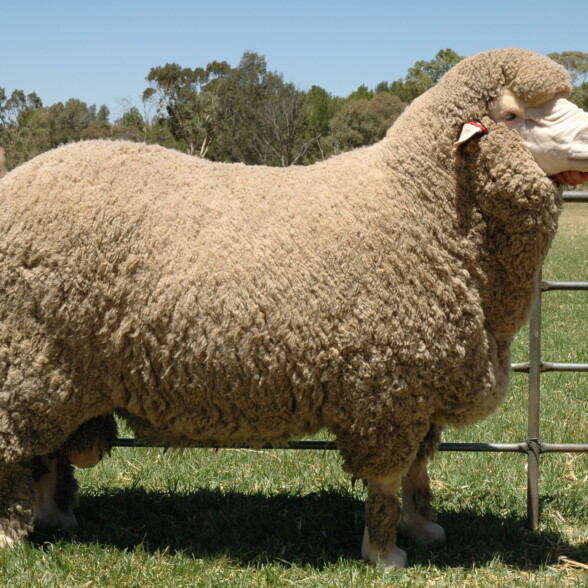
From Spain to Saxony to Scotland
Merino Wool
Merino sheep were originally raised in Spain during the Middle Ages. For centuries, Spanish sumptuary laws forbade the export of Merino-producing sheep from the Christian areas of Spain. As those laws were relaxed, in 1765, the King of Spain sent a herd of Merino sheep to his cousin, the Elector of Saxony in 1765. By the end of the century, the state of Saxony had 4 million of these sheep. Eventually, they spread across the globe.
Saxony Tweed
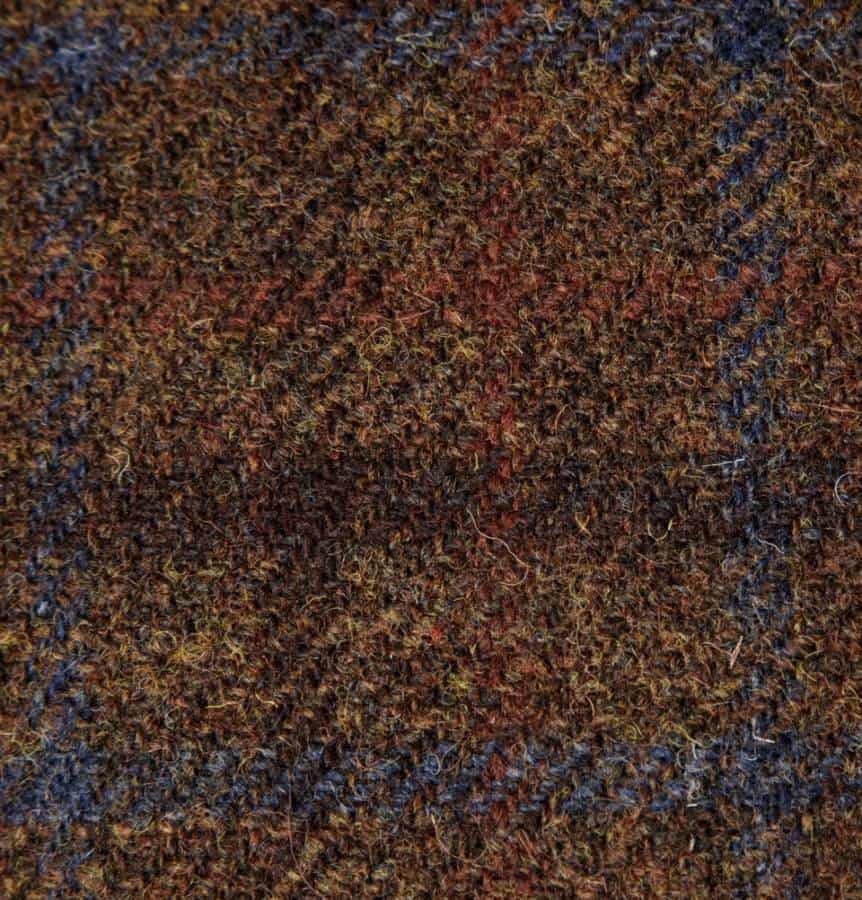
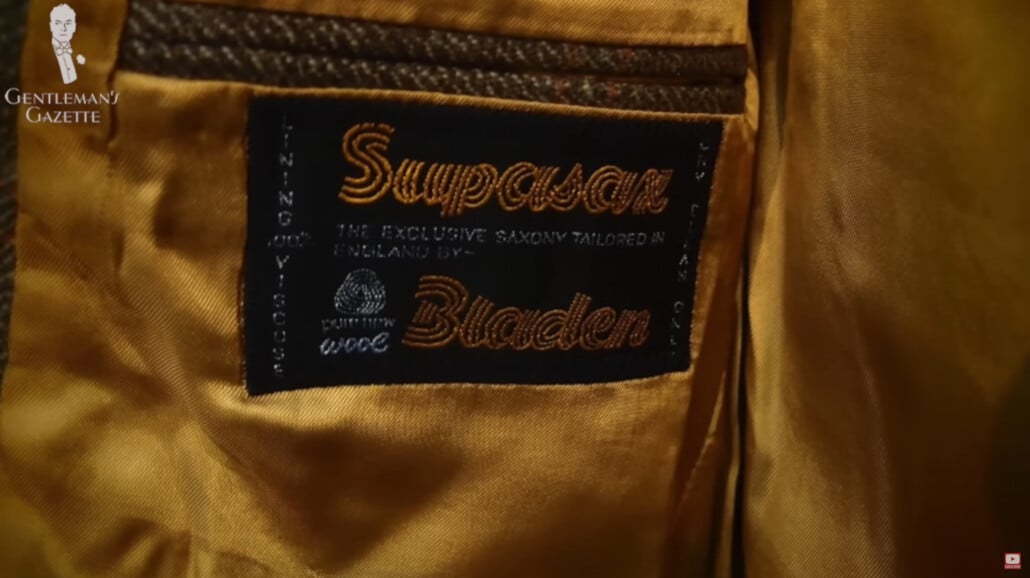
Saxony Tweed has a fine, short pile on its face and is very soft. It is used to produce comfortably wearing Merino-based sport jackets and, to some extent, suits. In the past, the British Bladen company provided the marvelous 700-gram Supasax tweed, which was a fantastic piece of Saxony Tweed. Although the company is still in existence today and still produces this tweed in 650 grams made from dense and heavy lambswool, it does not have the same hand as vintage examples. Also, the jacket styles available ready-to-wear are more limited. However, the company does offer a lighter 450-gram version that mixes wool and worsted yarns that are well-suited for office wear.
Did you know?
Although not as famous, you will also find tweeds labeled as “Welsh,” “West of England,” and “Yorkshire,” which are named for the areas in which they are manufactured. Their patterns, designs, and qualities tend not to be as consistent as those of the tweeds from Donegal and Saxony.
Functionally Named Tweeds
Gamekeeper Tweed
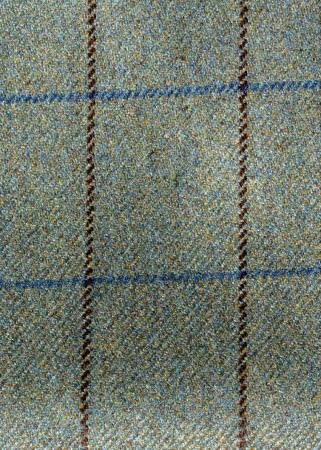
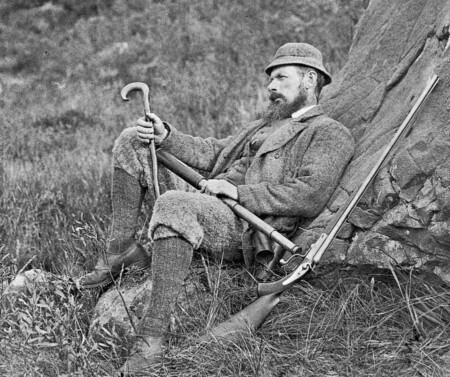
This tweed was designed to be worn by gamekeepers, who maintained animal populations on estates and regularly participated in hunts and cullings. The cloth is typically a heavier weight, over 700 grams or 24 ounces. This provides superior insulation and protection on cold days in the harsh elements. It can be found in various patterns, weaves, and colors.
Sporting Tweeds
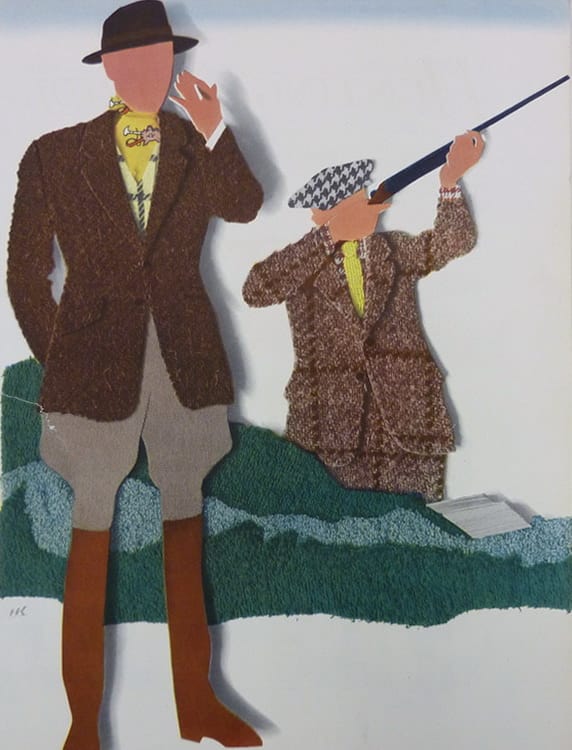
Sporting tweeds were developed as a form of ingenious camouflage to help hunters blend into the landscape, and each was particular to individual hunting estates. Color combinations were optimized to find the most effective combinations. For instance, one local weaver produced eight color variations for the Strathconon Estate before enlisting hunters to prove which was least visible. Tweed’s estate sporting background is the primary reason we have so many variations of patterns and colors today.
Thornproof Tweeds
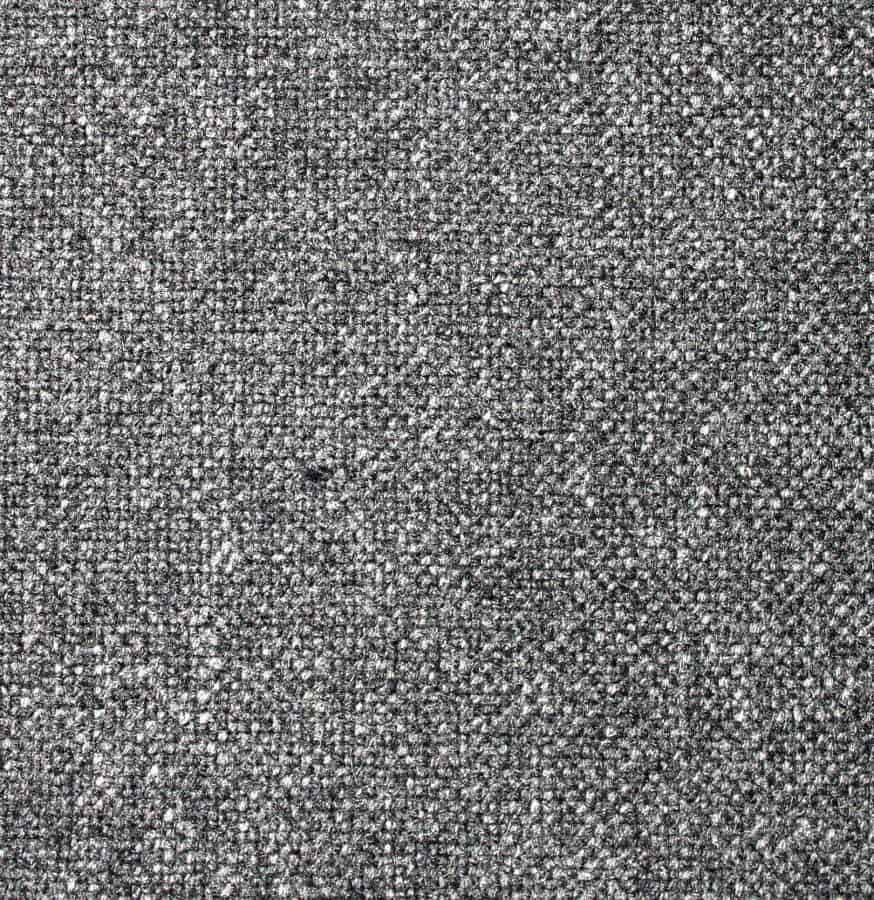
A thornproof tweed is woven with high-twist fibers to make the cloth tough and resistant to tears and punctures. It was first used in 1870 in the Red River Rebellion in Canada, where troops sought out heavy-duty fabrics to resist thorns when tramping through undergrowth. Thornproof is usually a plain, solid-colored, lightly gray-green fabric, but today it is also available with windowpanes. It is convenient for hunting or hiking through thick underbrush, brambles, and gorse. An unusual feature of the thornproof tweed is that it is a self-repairing cloth. If you push a sharp, pointed object through the fabric to make a hole, all you need to do is massage the cloth between your thumbs, and the hole will disappear.
Brand Name Tweeds
Harris Tweed
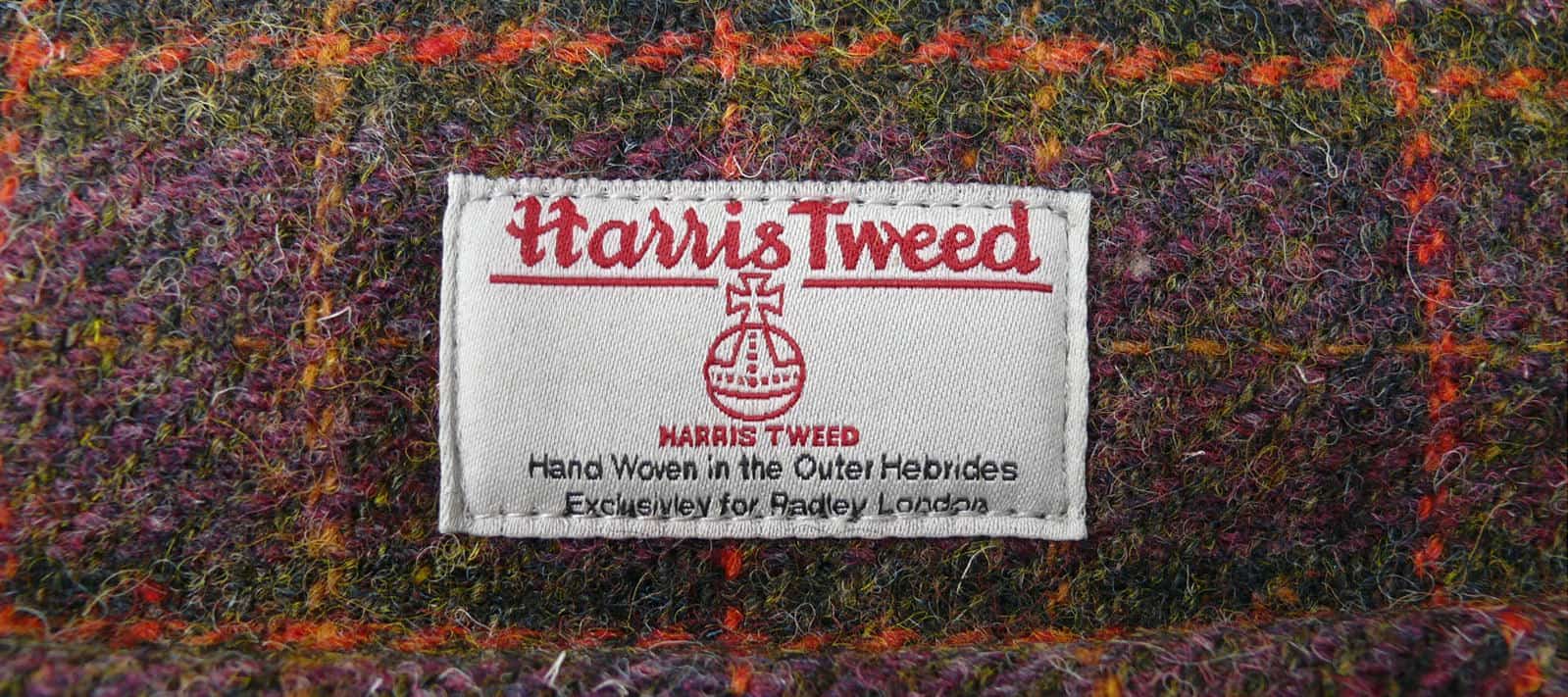
The most famous brand named Tweed is Harris. Harris Tweed has an open, loose twill weave that is rough to the touch. First woven in the 18th century by crafters in the Outer Hebrides, especially on the Isle of Harris, it was introduced to the British aristocracy in the 1840s by Lady Catherine Murray, Countess of Dunmore. From age-old towns in remote communities, the people of Scotland’s Outer Hebrides provided the world with incredible tweed fabrics.
To regulate and protect the fabric against imitations, the Harris Tweed Orb certification mark was created in 1909 – the oldest British mark of its kind – with the definition, “only tweeds woven in the Outer Hebrides would be eligible.” The use of the name was protected, and only hand-spun and hand-woven products of 100% wool from the Outer Hebrides were allowed to use the Harris Tweed trademark.
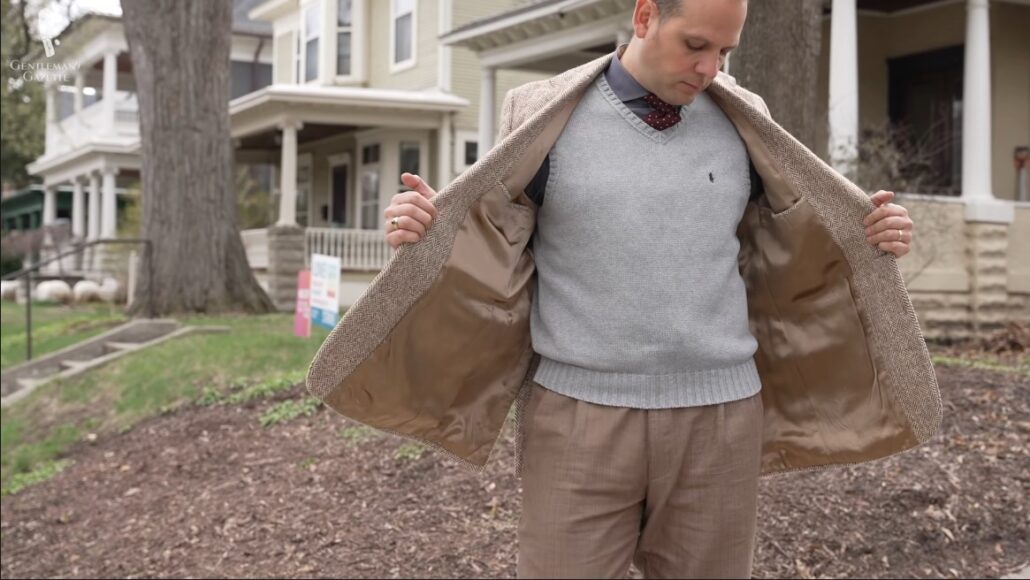
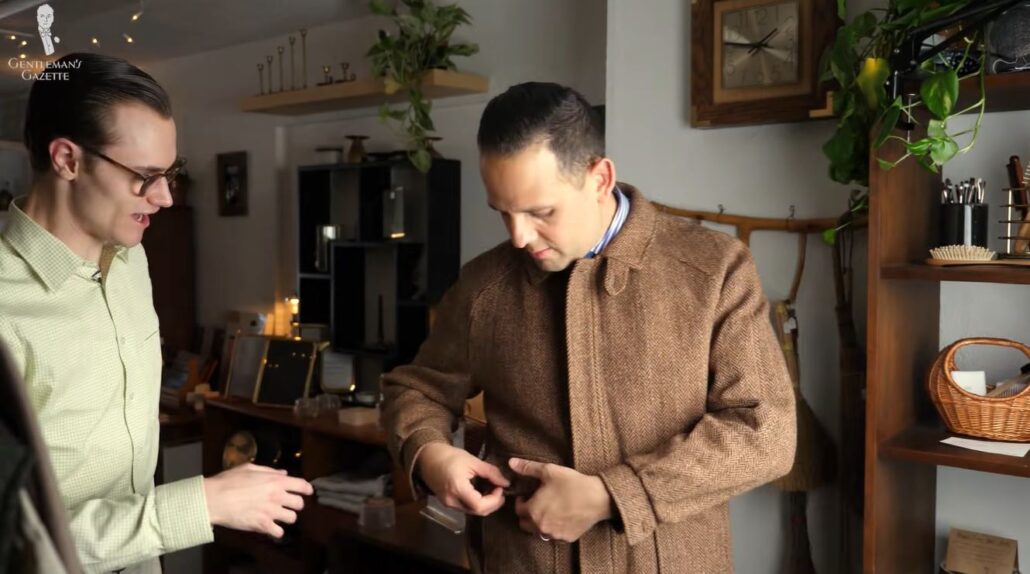
Today, the yarn is 100% pure virgin wool but no longer hand-spun. This change was introduced because new looms, such as the Hattersley Mark 1 loom, the first kind operated by feet, were so efficient that the weavers were unable to produce the quantity or consistent quality necessary from hand-spun yarn. Unfortunately, there was not enough wool from the Outer Hebrides to meet the demand, and hence, 100% virgin wool from the United Kingdom is accepted now. Clothing made out of Harris Tweed will have a trademark label sewn into it.
Is Harris Tweed worth it?
Estate Named Tweeds
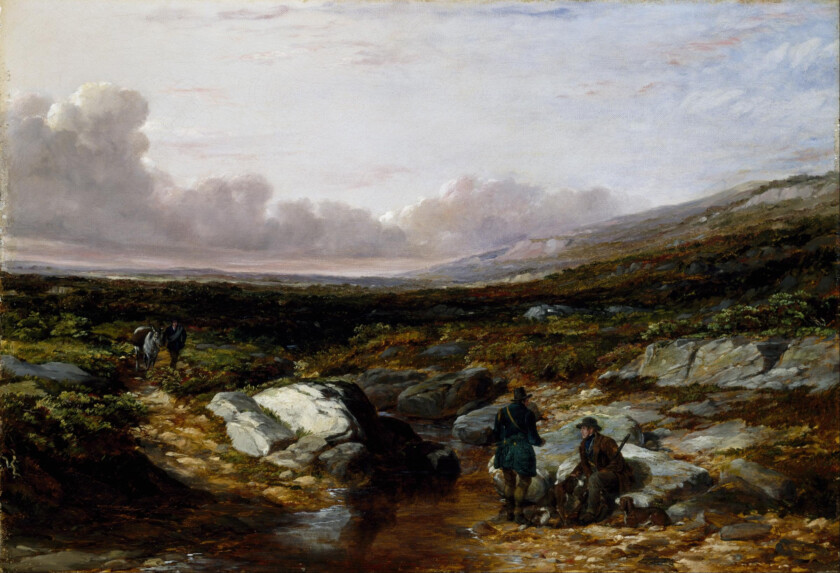
Estate-named tweeds are associated with the particular estate for which they were commissioned. These tweeds are remarkable for their variety in patterns, colors, and weaves. This variety gives modern-day tweed wearers plenty of options from which to choose.
Common Tweed Patterns

Tweed can be made into numerous patterns with various colors and designs. In most cases, the pattern choices are merely aesthetic, but in some instances, they can affect the durability of the fabric. How busy or vibrant a pattern is will also affect the overall formality of the tweed fabric.
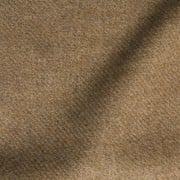
Plain Twill
This is a simple weave with a diagonal pattern running throughout.
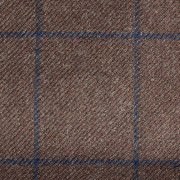
Overcheck Twill
A plain twill with a large checked design overlaid in contrasting color.
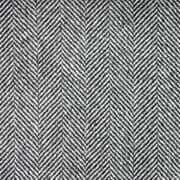
Plain Herringbone
Herringbone is so named because it looks like fish bones. The direction of the slant alternates column by column to create ‘v’ shapes. The pattern is quite pleasing to the eye.
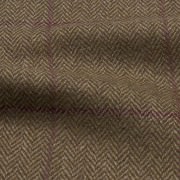
Overcheck Herringbone
This pattern consists of a herringbone weave overlaid with a check in various colors. It is also sometimes referred to as “Estate Tweed,” because it was a popular generic design on the estates.
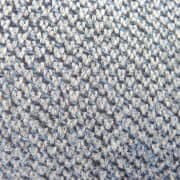
Barleycorn
Barleycorn tweeds are typically coarse and have a weave that produces the effect of barley kernels when viewed close-up. It is a very lively pattern.
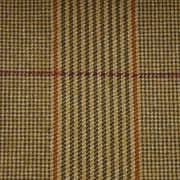
Striped
Striped tweeds incorporate vertical lines to create visible stripes of various sizes.
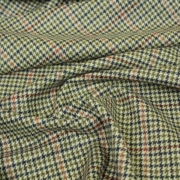
Houndstooth
This pattern resembles the back teeth of a dog and was found to be a very effective form of camouflage. The larger houndstooth pattern is contrasted with the smaller “dogtooth” and the even smaller “puppytooth.”
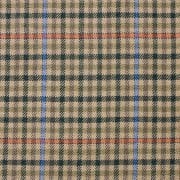
Checked
A pattern of horizontal and vertical lines that create small squares. It is sometimes enhanced by a larger overcheck in a different color.
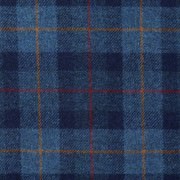
Tartans and Plaids
The traditional Scottish clan cloth, that designates a particular family or region, can be woven as a tweed.
Tweed Today


Although tweed does evoke stereotypes such as the Country Gentleman, The College Professor, and East Coast Intellectual, the cloth has experienced a renaissance in recent times and now carries with it a certain sophistication.
A long line of subculture movements such as the British Indie, hipster, Sloane Rangers, and preppies has enthusiastically adopted tweed as a part of their wardrobe repertoire. This periodic “return to tweed” not only helps keep the tradition of tweed alive but also serves to inject new life and energy into this iconic cloth.
“Got my tweed pressed / Got my best vest / All I need now is the girl”
Frank Sinatra
Although tweed may still be the exclusive uniform for windswept Scottish estates, nowadays, a thoughtful, well-tailored tweed jacket or suit evokes a certain refined flair for any man. Its rustic outdoor heritage makes it a very democratic cloth, suitable for wear for all classes.
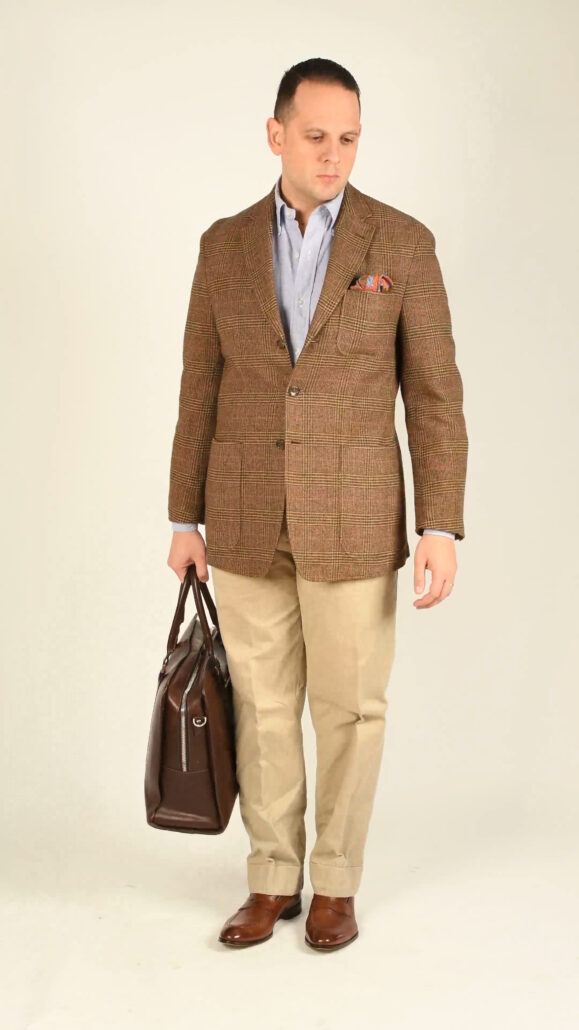
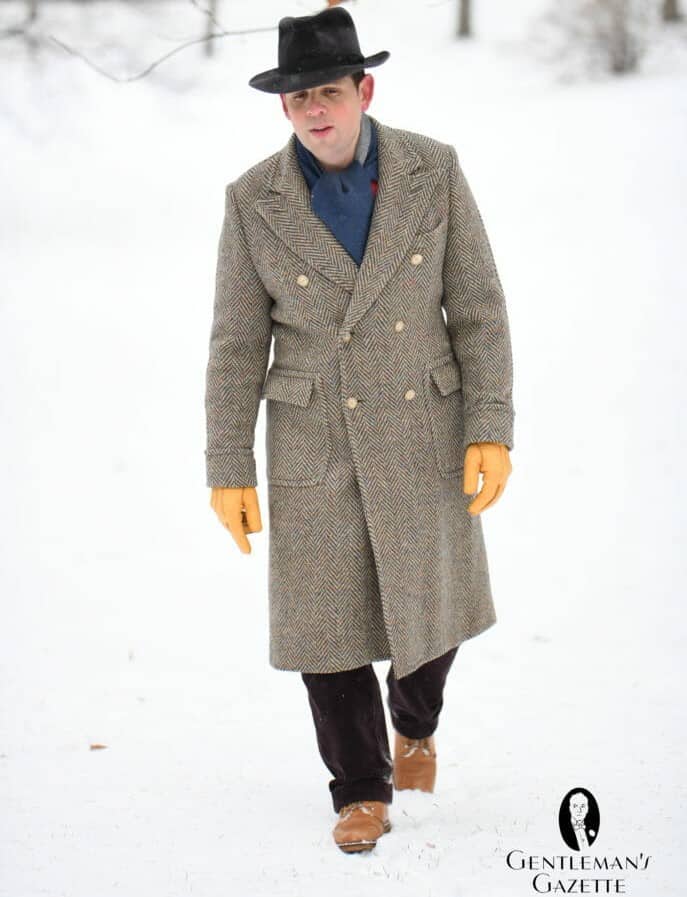
How to Wear Tweed
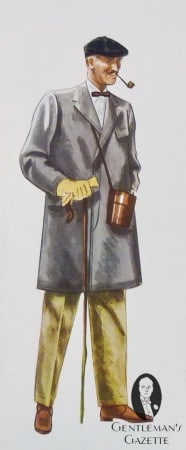
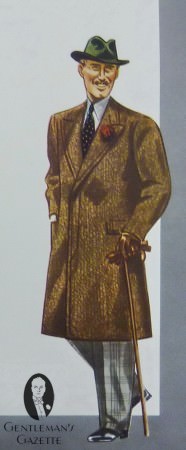
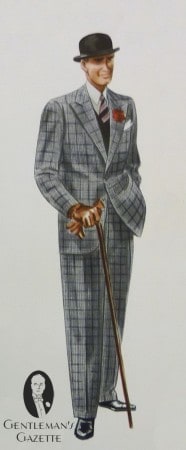
Because Tweed is inherently a cool weather fabric, it goes well with autumn, cold-weather golfing, the opening of bird season, fall run trout, and crisp winter days. A good rule of thumb for tweed is to wear it in any cool weather situation where a sports coat or casual suit is appropriate.
Weekends are great for tweed. Conventionally, tweed would never be worn in professional or business settings, but with the decreasing formality of menswear in general, no one will bat an eye at a tweed suit except in the most formal and traditional of offices.
Tweed should not, however, be worn on formal occasions: it is simply too sporty and casual.
Master the weather with layering!
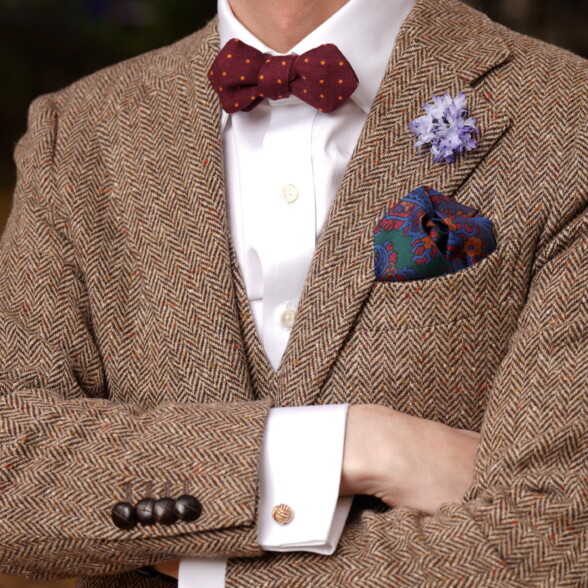
Tweed needs to be
Broken In
Because of the way that the wool is woven, brand-new tweed garments, especially jackets and coats, require a break-in period for the fabric to naturally loosen and relax. Some people even go so far as to dash their tweeds against a wall to speed up the process! We recommend that you simply wear your tweeds around your home until they break in: you will know that they have once they feel supremely comfortable and natural to wear.
Tweed Weight and Temperature Appropriateness
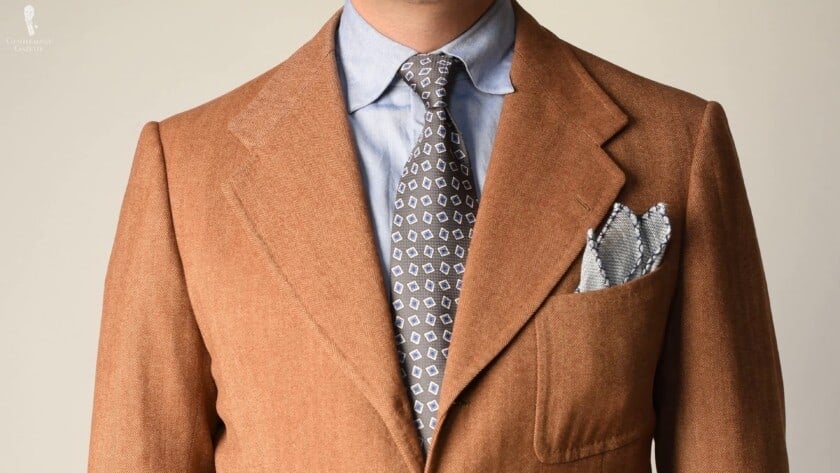
Like all fabrics, tweed fabric is usually measured by weight in grams: generally, the higher the number, the heavier and thicker the fabric. Suits made of heavy 700-gram fabrics will not be suitable for most people unless they go shooting when it’s cold outside or the fabric is made up into a coat. Of course, a heavy 1000-gram Gamekeeper’s tweed may be great for some outdoor activity, but if worn indoors, it will likely be too warm.
For most, suits or sports coats made out of a 300 – 400-gram tweed cloth will be much more suitable for a number of different activities such as hiking or strolling. As with anything, consider all these aspects before buying tweed so you are not stuck with a beautiful garment that just hangs in your closet because it’s too warm for you to wear.
How to Wear Tweed Garments
The Traditional Tweed Suit

True country tweed suits are hard-wearing long-lasting garments. Little details like collar closures, leather buttons, and hacking (slanted) pockets all add to the distinctiveness of the look.
If you fancy tweed, you should consider investing in a three-piece tweed suit, perhaps even with knickerbockers, but whatever you decide, ensure you choose a weight that is appropriate to your climate and purpose. The additional waistcoat will also unlock considerable styling potential as a visually grounded odd waistcoat.
If you’re really into tweed and the country lifestyle, you can go full bore with a Norfolk jacket.
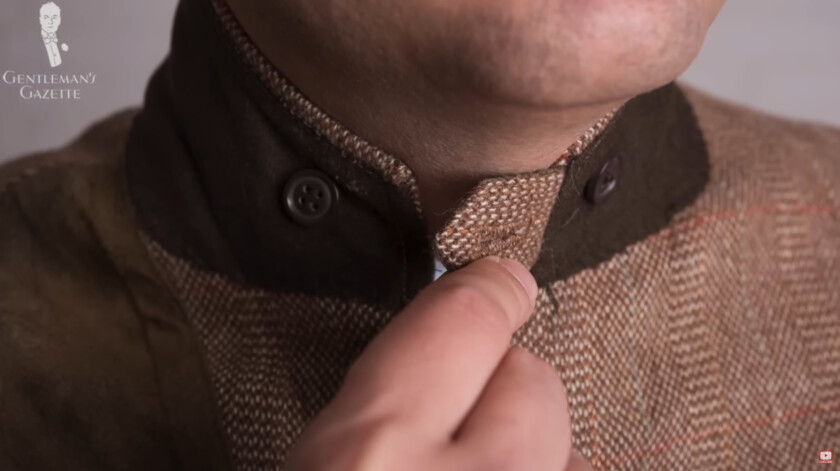
Tweed Jackets and Coats
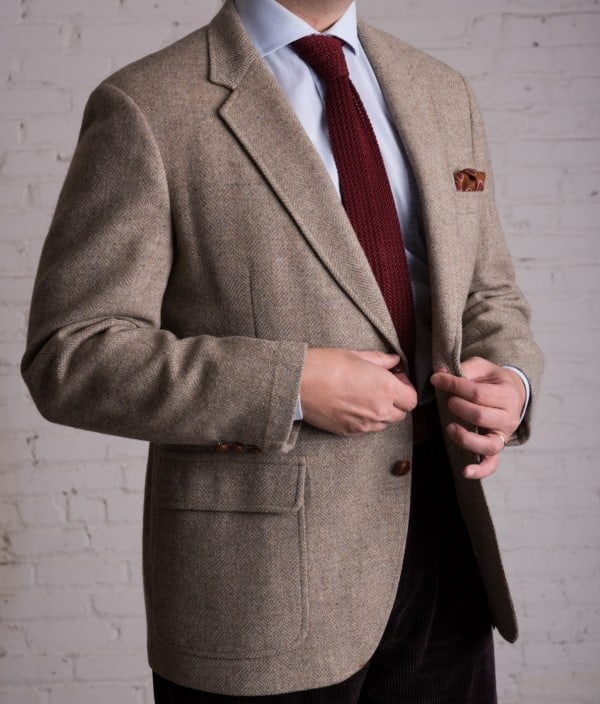
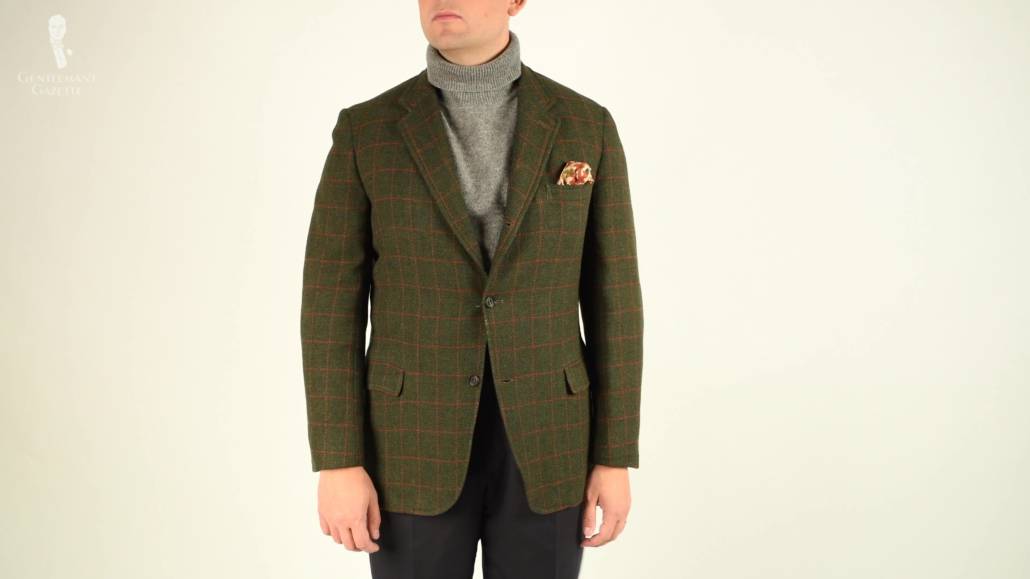
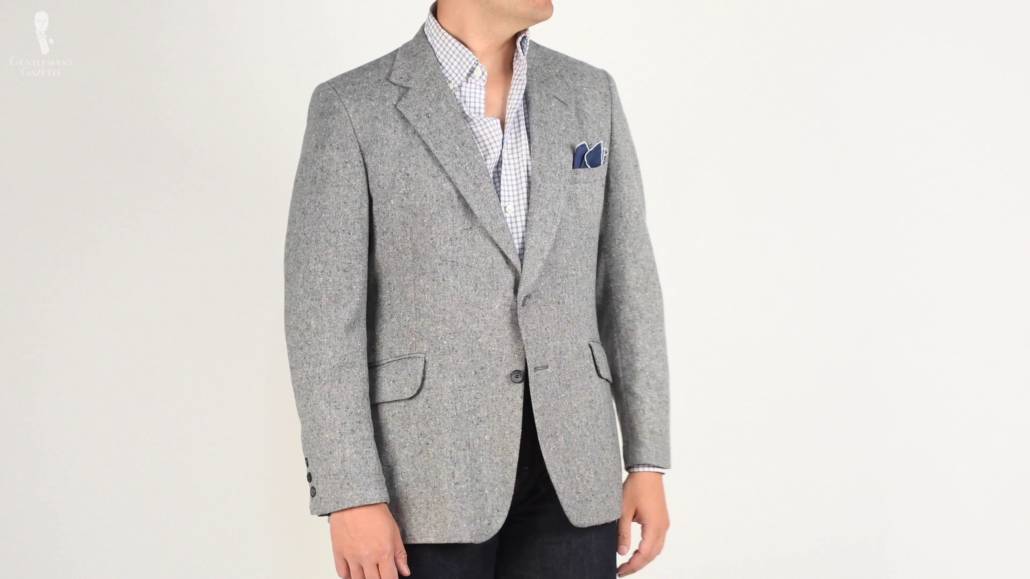
Due to its country heritage, the vast majority of all tweed jackets are tailored in a single-breasted style with notched lapels and center vents, the vents being a nod to the adaption of jackets for horseback riding. Back in the day, tweed suits were the normal wear option, whereas today, you see more sport coats than two-piece and three-piece suits.
Coats and Overcoats
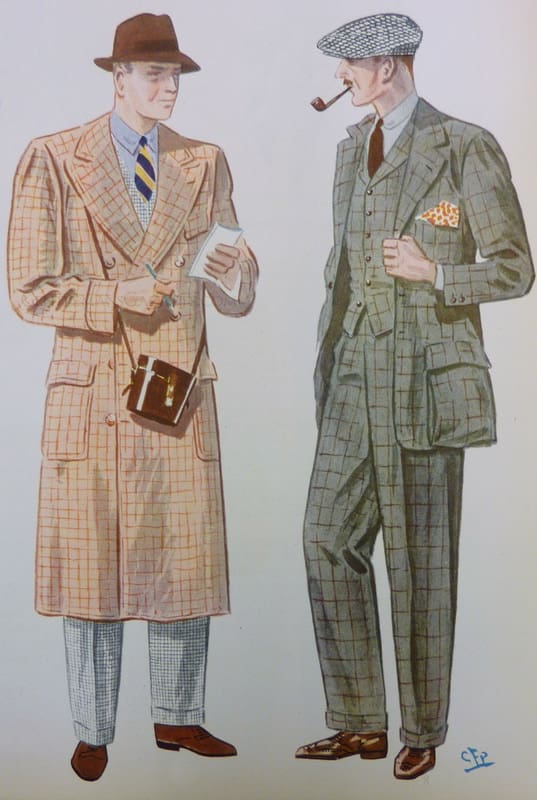
As an insulating fabric with a gorgeous drape and unique color, tweed is well-suited to coats and especially long overcoats. Heavy, by which we mean over 500 grams, tweed cloth makes for fantastic overcoats, such as an Ulster or Guards Coat.
Learn why men stopped wearing long overcoats
Tweed Vests and Waistcoats
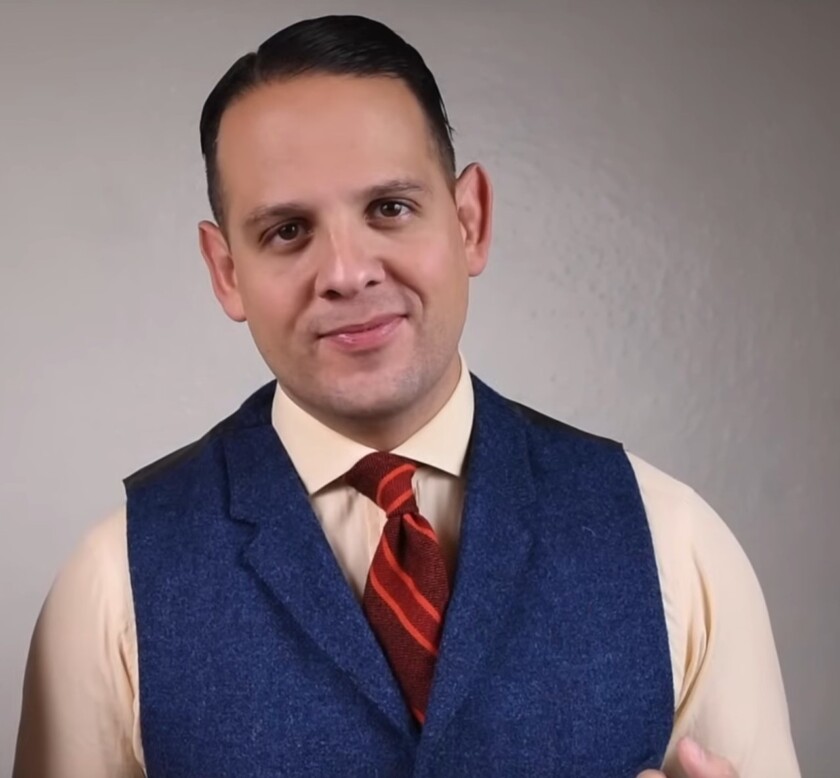
The general advantage of an odd waistcoat is its ability to expand your dressing ensembles in size and flexibility without taking up much additional space in your wardrobe, all at reduced costs. This is especially true of tweed waistcoats, with their unique texture for visual interest and earth-toned color schemes that will harmonize with most Classic Style outfits.

Never look odd wearing odd waistcoats!
Accessories

Tweed is not only suited for apparel but also for duffel bags, luggage, gun cases, or even briefcases. You can even find people who wear matching accessories with their bespoke tweed suits, which can look rather sophisticated.
And let’s not forget the classic tweed driving cap favored by rally racers and golfers of yore. These hats lend a dashing touch to a tweed jacket or suit.
What to Pair with Tweed
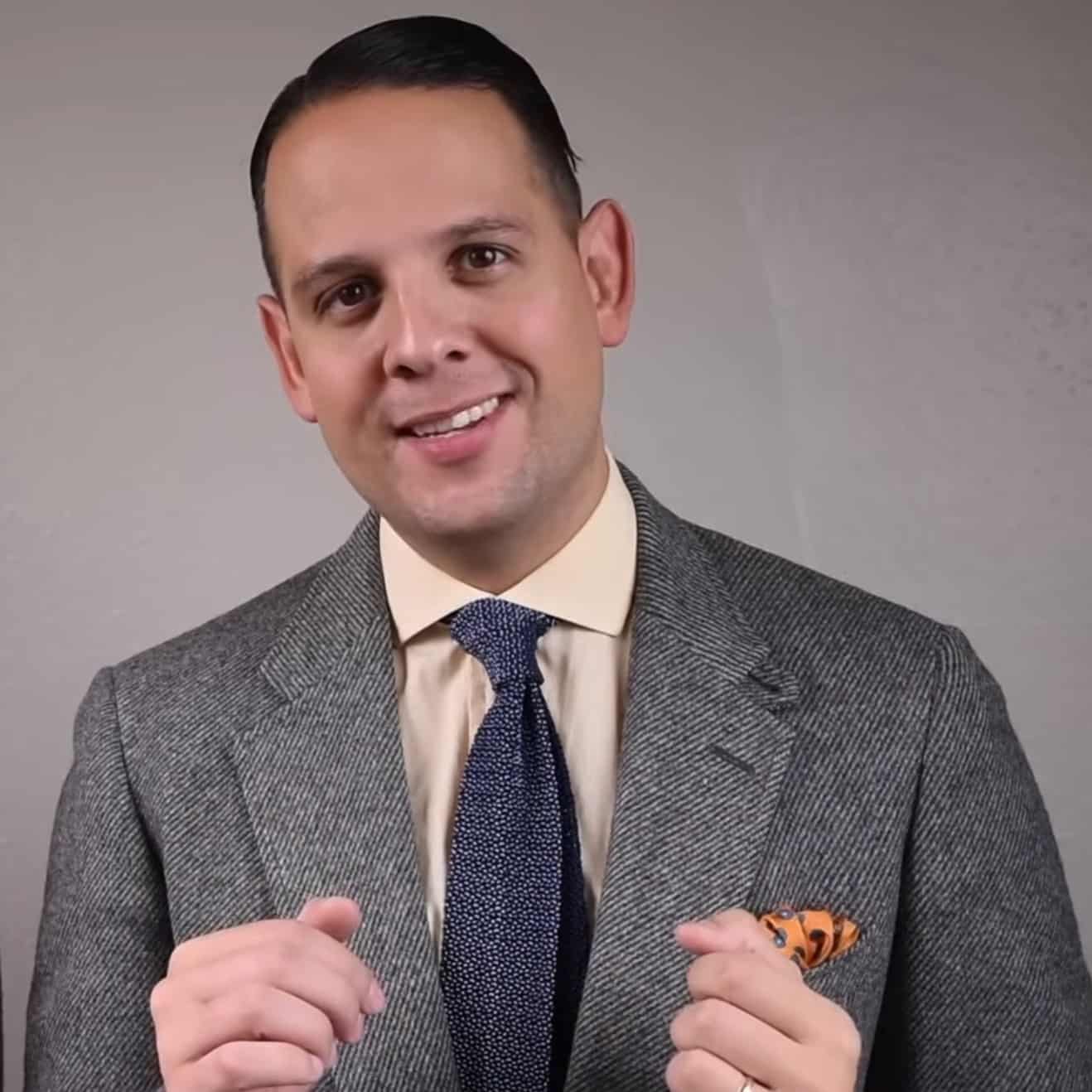
Shirts
Most tweeds look best with shirts that are not white. Instead, choose pastel colors or patterned flannel shirts in Super 80s rather than a super 200s, because not only are they more in line with the country heritage, they provide more stimulating visual interest that balances the texture of tweed.
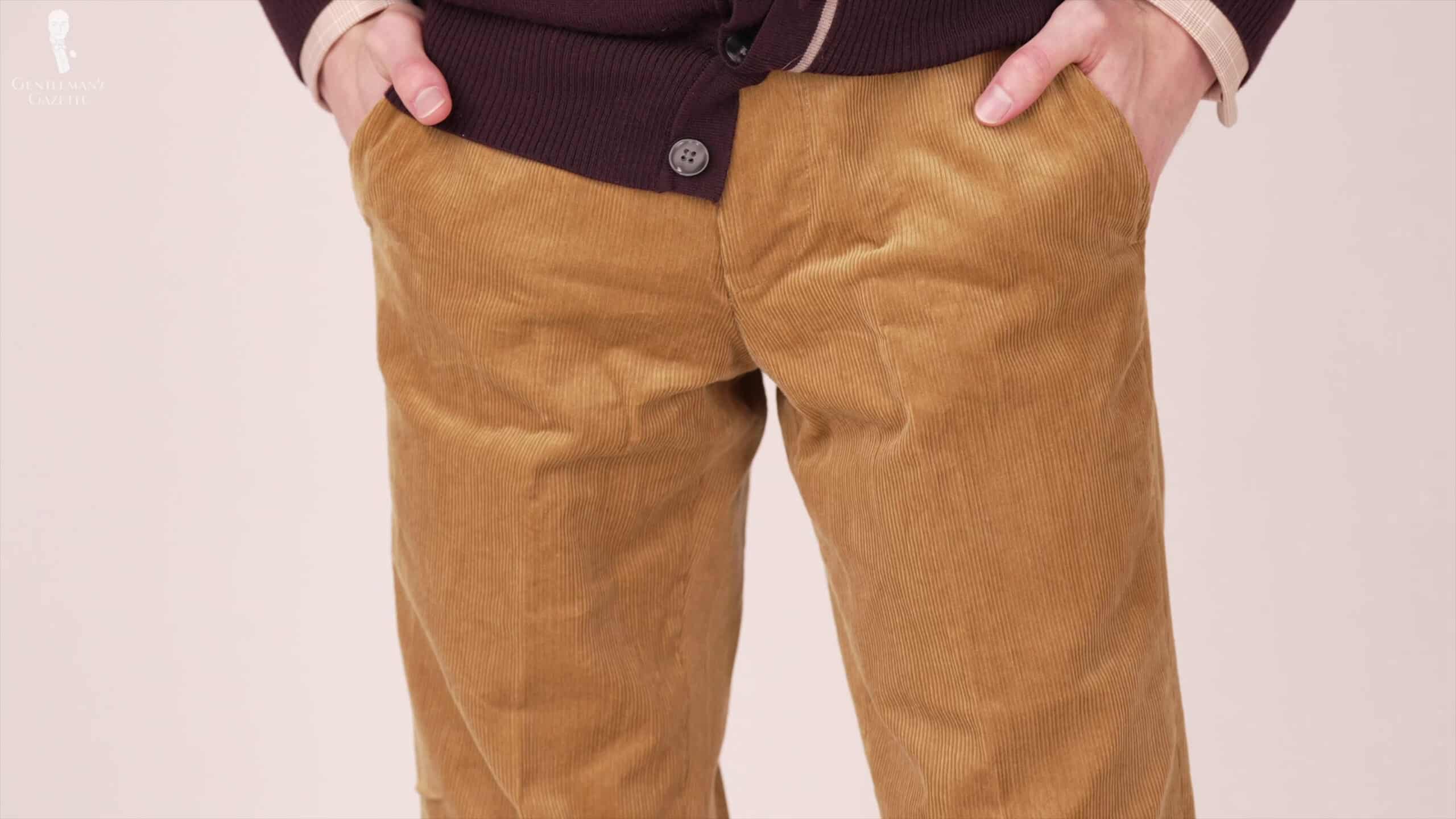
Trousers
If you decide to go with an odd jacket made of tweed, there are several good options for pants. In general, a heavier wool is called for to match the weightiness of tweed fabric. Flannel is a great choice as are corduroy, preferably wide-wale, Calvary twill, moleskin, and even waxed cotton. Chinos could also work if the tweed is a lighter weight. Some might even consider a sturdy pair of selvage jeans in a pinch.
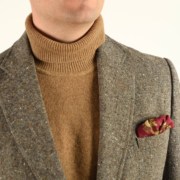
Pocket Squares
Any pocket square that complements your outfit will work well with tweed, although autumnal colors will be especially appealing. Avoid, however, white pocket squares, for the same reason that you avoid white shirts.
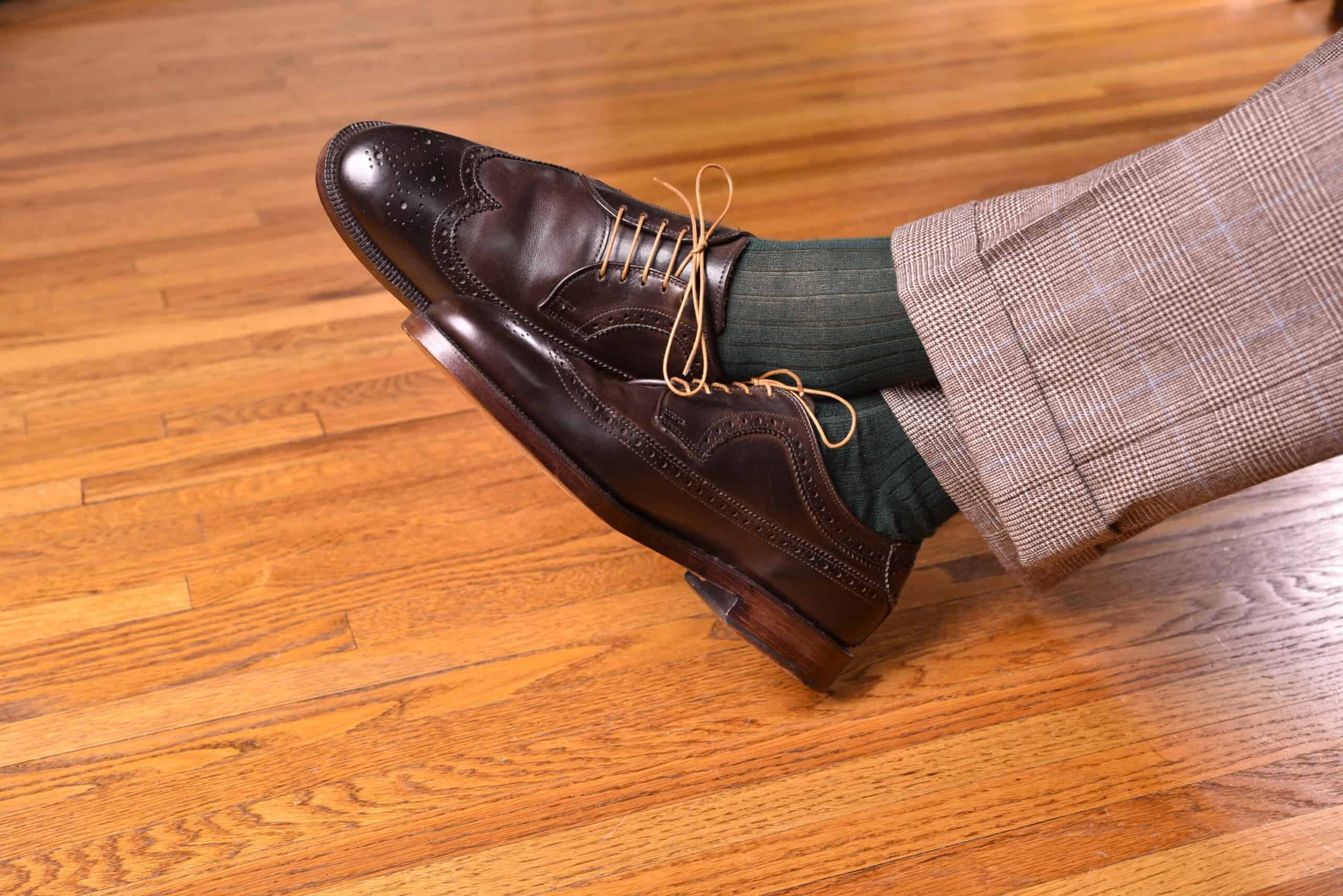
Shoes
Full brogues in all shades of brown, lace-up dress boots or jodhpurs, and double soled derbies are all excellent compansions for tweeds because they suit the formality of the fabric. Avoid oxfords as they are more formal, and definitely avoid black shoes: they are too professional and business-oriented for tweeds.
Tweed’s Best Friend: Corduroy Trousers from Fort Belvedere
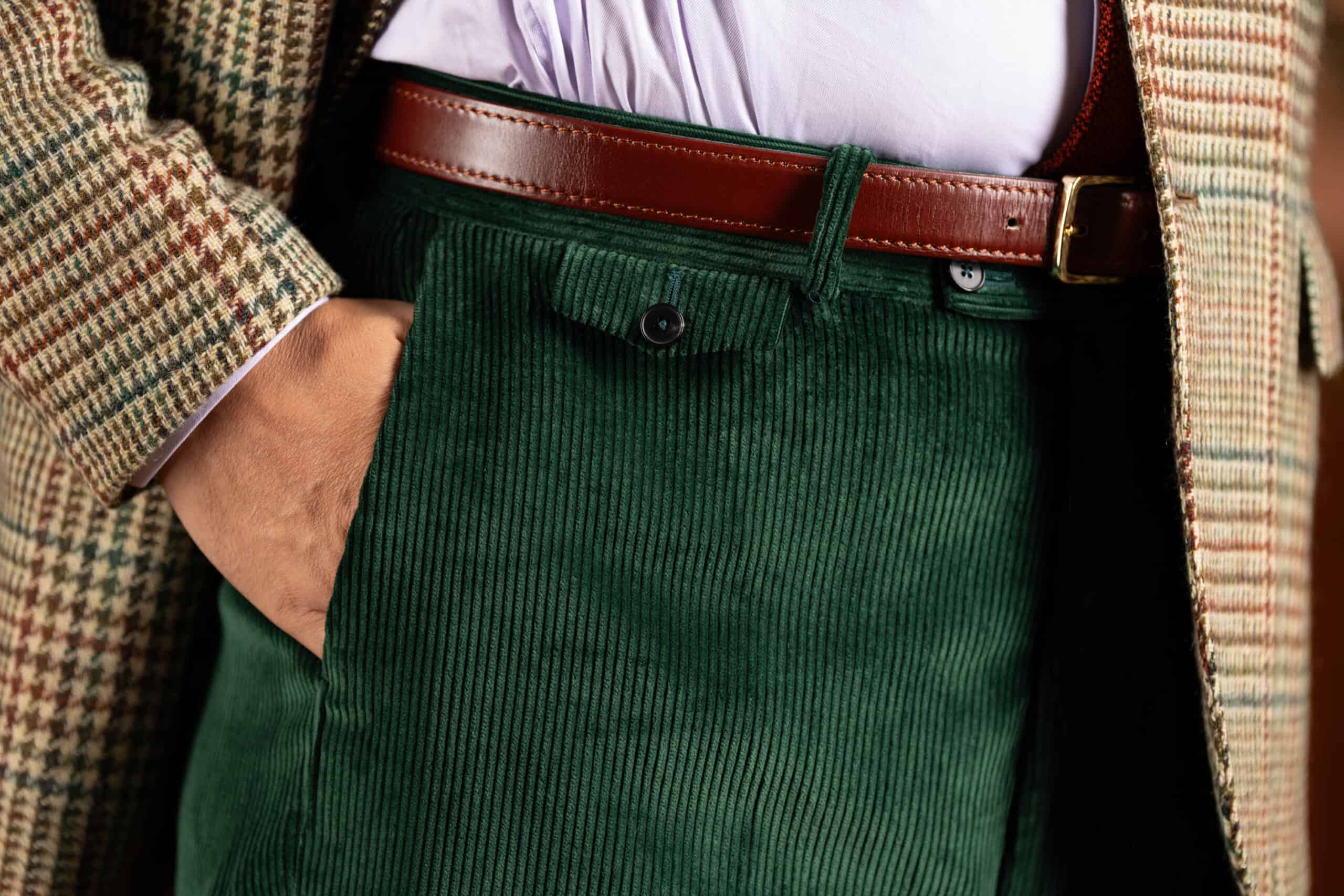
Stancliffe Corduroy Trousers
British Racing Green

Stancliffe Corduroy Trousers
Goldenrod Yellow

Stancliffe Corduroy Trousers
Pale Tan Taupe
How to Buy Tweed
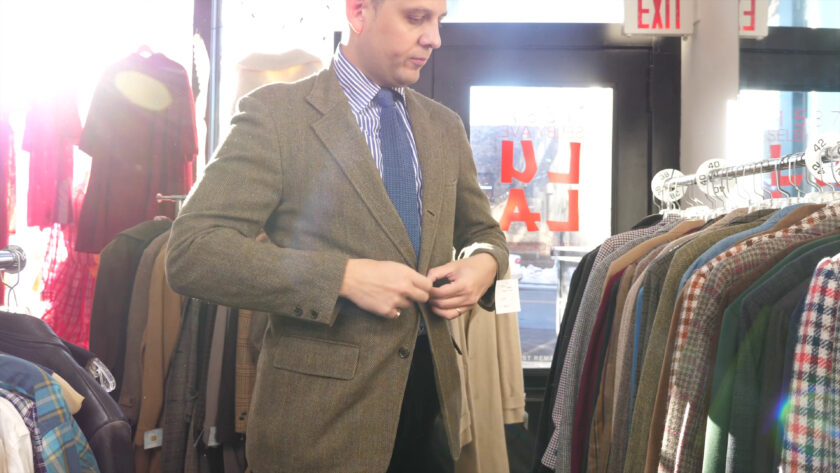
As a mainstay fabric in Classic Menswear, tweed is sold by almost every major retailer in some iteration. Heritage tweed makers provide their fabrics to numerous companies, including high-end and fashion brands, as well as occasionally assembling garments themselves.
Companies to Consider
The following companies are closely associated with either the making of tweed or the production of quality tweed products. You may find it beneficial to peruse their websites while making your selection, but in general, any brands that you personally favor and trust are likely to offer tweed products in their lineup.
| Brand | Relative Cost |
|---|---|
| Walker & Hawkes | $ |
| Abraham Moon & Sons | $$ |
| Magee 1866 | $$ |
| Harris Tweed | $$$ |
| Fox Brothers & Co. | $$$ |
| Vitale Barberis Canonico | $$$ |
| Johnstons of Elgin | $$$ |
| Ralph Lauren | $$$ |
| Thomas Farthing | $$$ |
| Scabal | $$$$ |
| Dormeuil | $$$$$ |
| Loro Piana | $$$$$ |
Tweed Lookbook
Brown Tweed Jacket with Maroon Corduroy Trousers

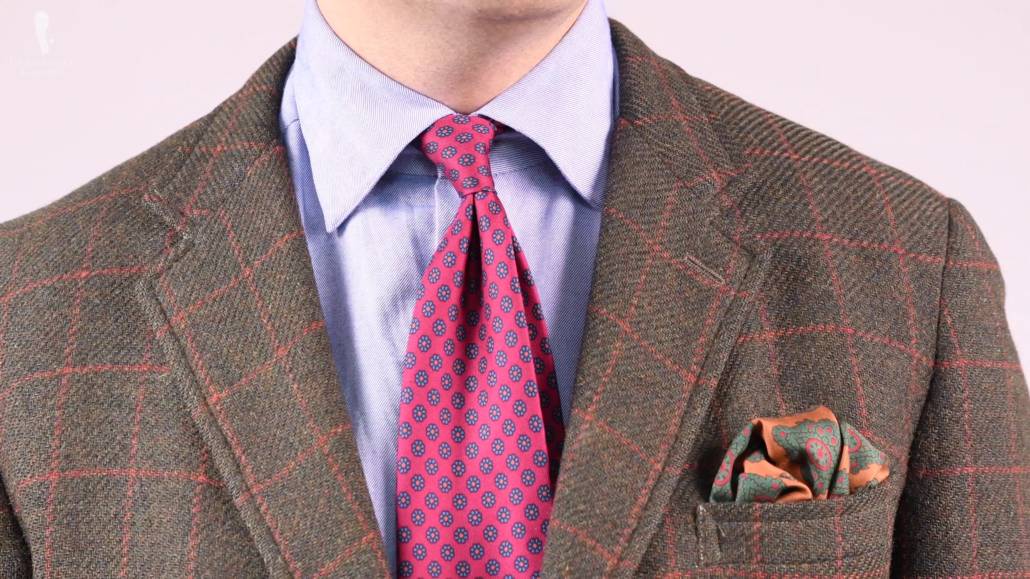
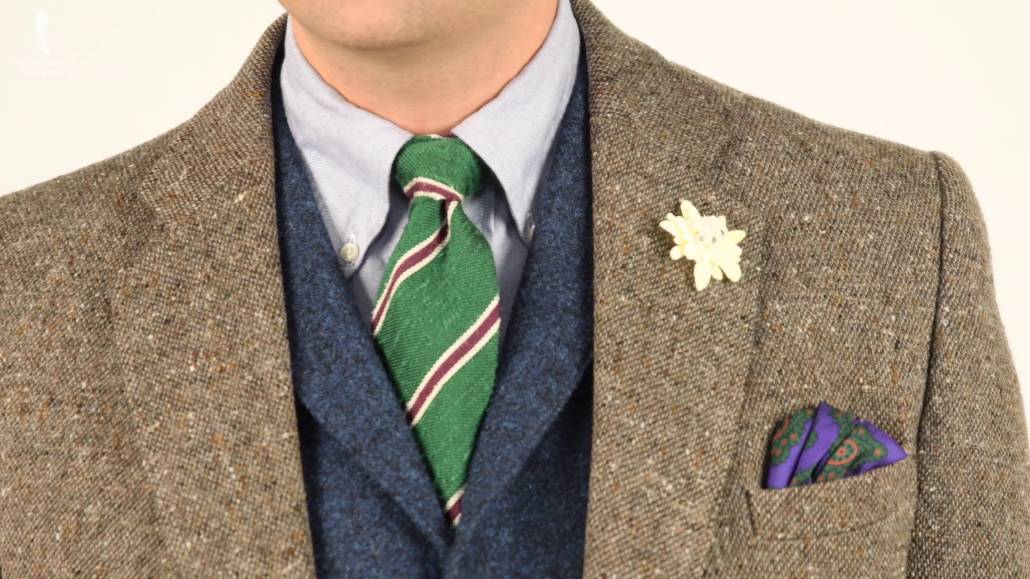
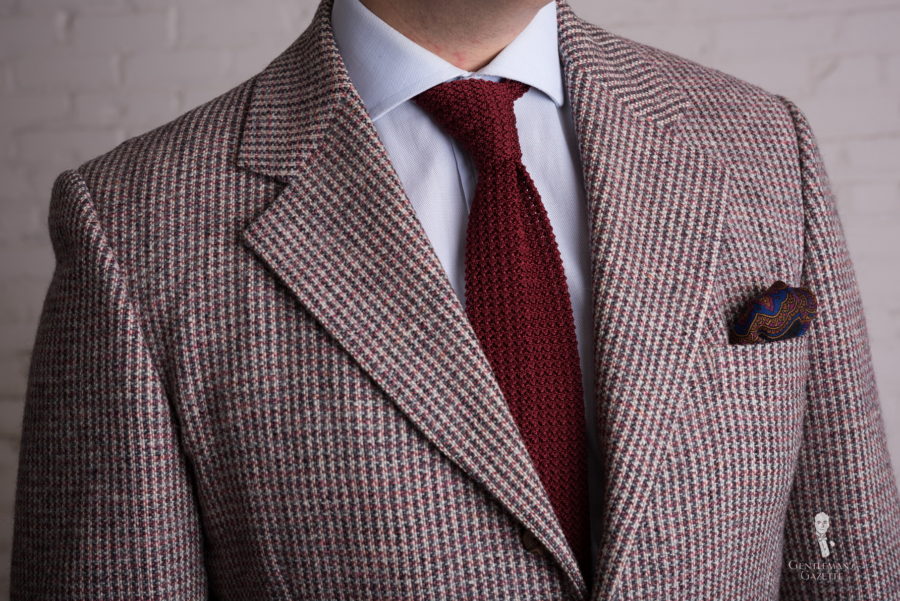
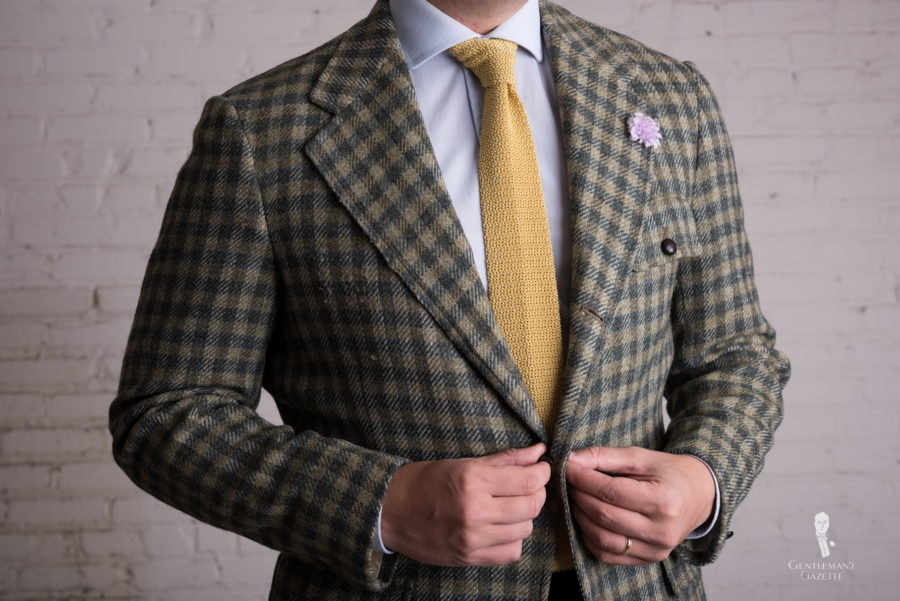
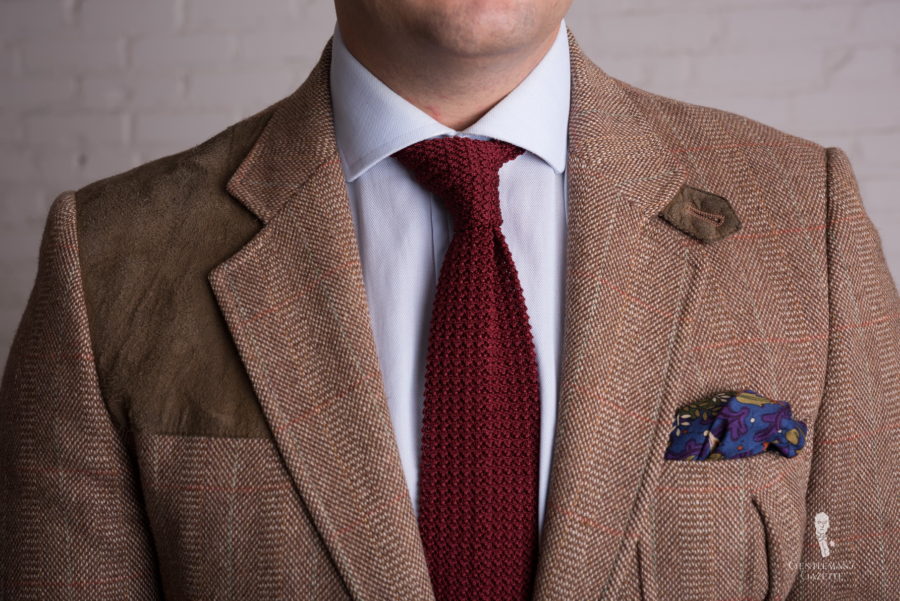

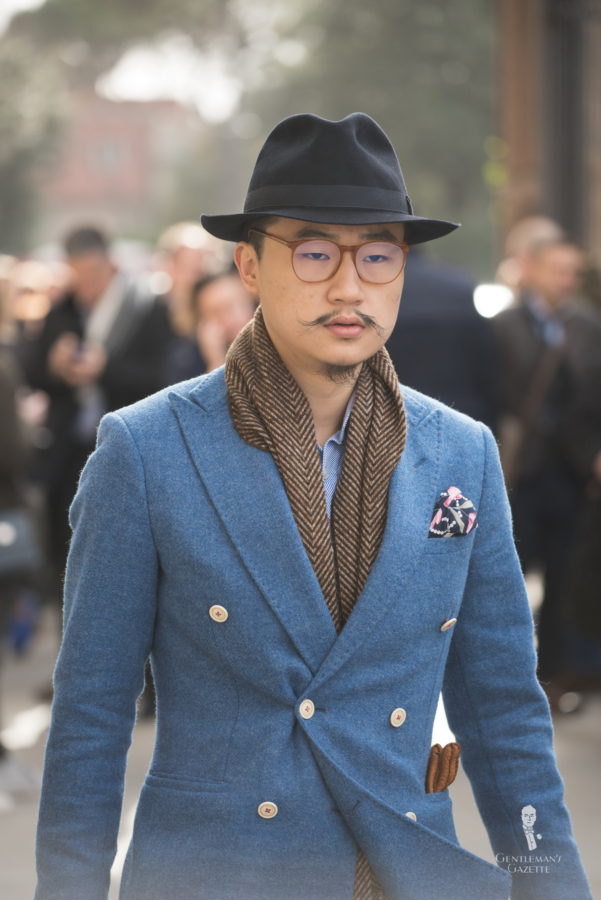
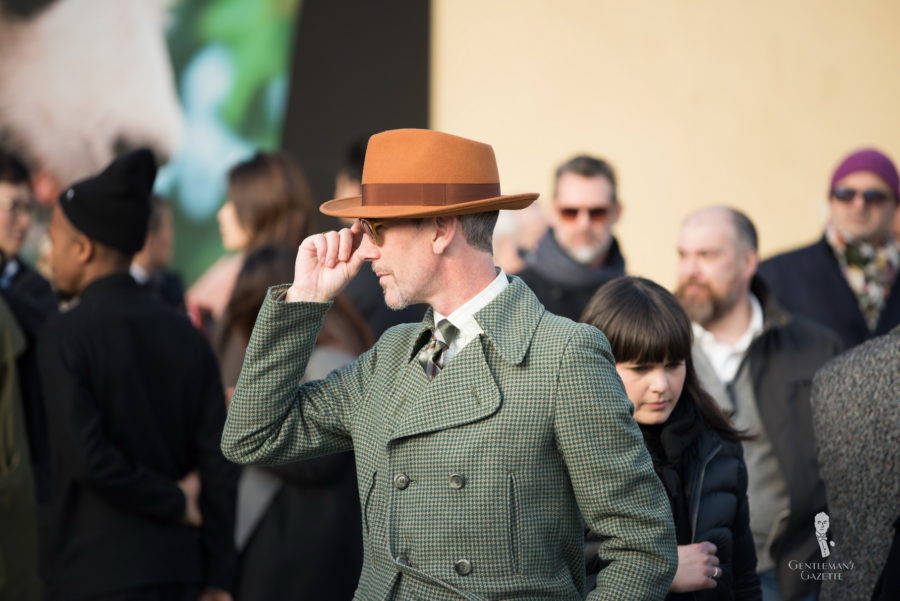
Gray Donegal Tweed Jacket with Maroon Corduroy Trousers

Fort Belvedere
Product Name
See more of our lookbooks!
Conclusion

We hope that we have been able to show you that tweed is not the itchy, stuffy, stodgy fabric only worn by aging men but rather a fabric with a rich and varied history that is also practical, versatile, and classically stylish. Although eminently suited for its original outdoor purpose as well as any cool weather casual occasion, it can certainly be worn in the city today, especially in less formal environments or on the weekends.
How do you like to wear your tweeds? Let us know in the comments!
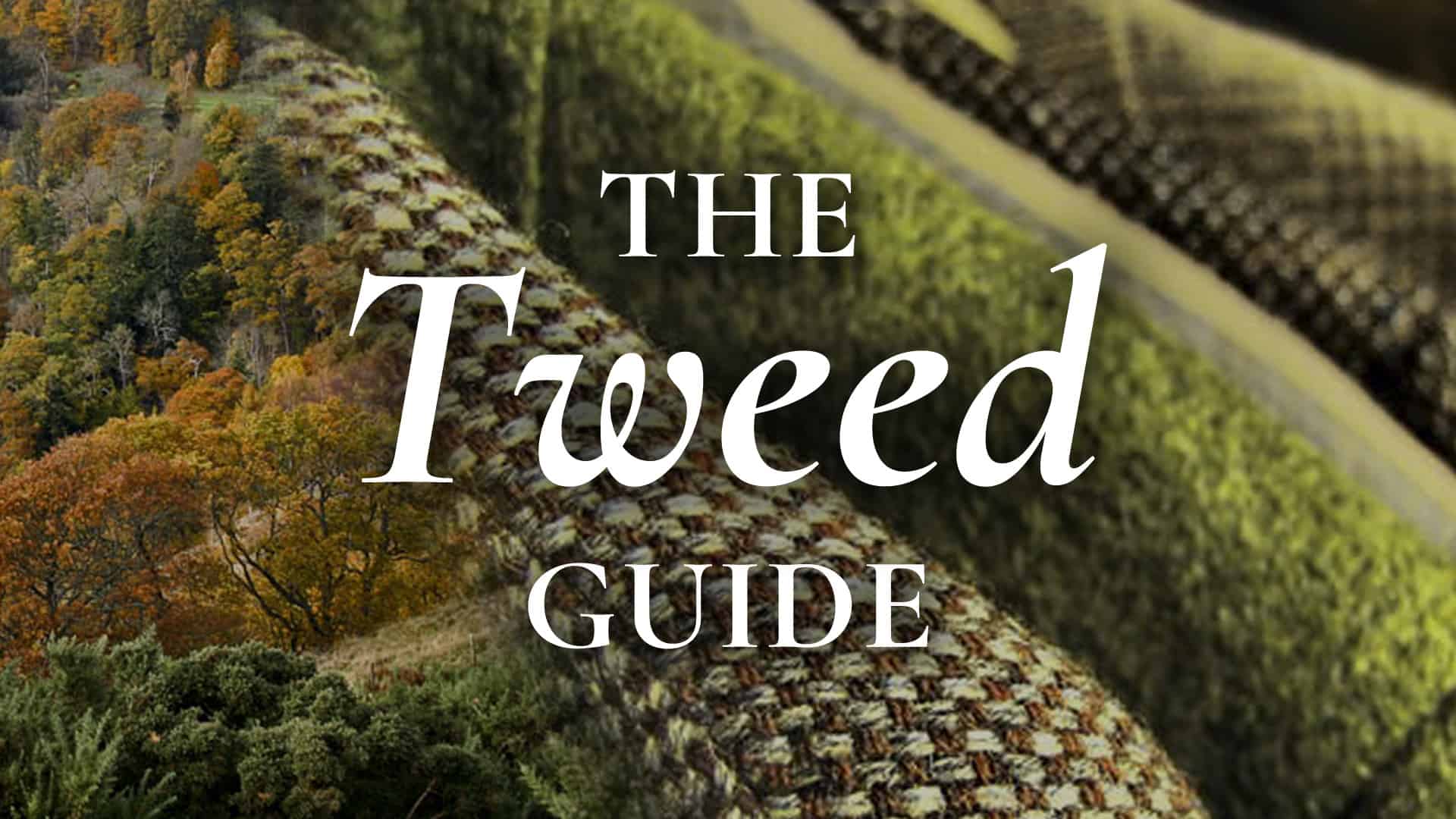

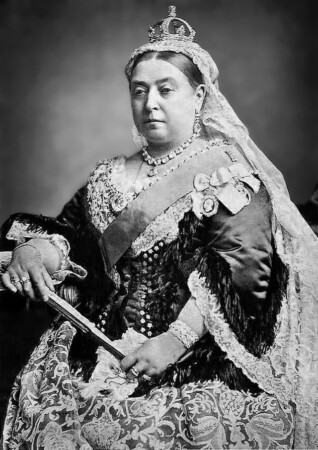
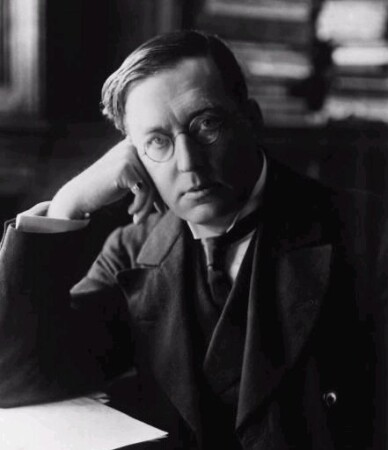




Simply marvelous!
Thank you.
What a story! What a hell lot of work!
Thank you for this great post!
You are welcome Mike.
I enjoyed this article very much. I would say that for many of those (in the British Isles) who wear tweed, it never really went away, and as such the notion of a ‘come-back’ is rather misplaced. However, I am not sure the ‘no brown in town’ rule has been relaxed – in the City of London, at any rate, you will see very few dressed in tweed.
You mention clan tweeds and estate tweeds. I know also of at least one regimental tweed, that of the Queen’s Own Highlanders, whose officers had a specially woven tweed for off-duty wear.
I would take issue with the advice concerning weight of cloth, although what has been written here may be from a North American rather than a British perspective. I disagree that 700 gram is not suited to most people ‘except when it is cold outside’ (for one thing, it’s cold outside at least 8 months of the year in Britain). In my view 700-750 is a better weight of tweed than 300-400 gram, which you advocate. I would say the latter is too light and will not show the drape and outdoor properties of tweed to best advantage. My own favourite is a 1000 gram thornproof tweed ‘ratcatcher’ hacking jacket, which I find ideal from November to the end of March.
Whilst it is true that wearing tweed never went away in the British Isles, it is also fair to say that it has had something of a resurgence in popularity in the last couple of years. A general interest in ‘heritage brands’ has helped it and Matt Smith’s Dr Who has also helped to promote the tweed look (even if, sadly, he was costumed in a Chinese tweed after first appearing in Harris tweed). It is once again a young man’s look, as well.
More generally, a guide to buying tweed second hand might be helpful. Given how hard wearing it is there are plenty of vintage tweed jackets available. I personally own both new and old ones. Are there any things to look out for, though? Pitfalls to be avoided or recommendations for what to look out for?
The main pitfall is probably moth – that, or poor fit (obviously). I’m very tall and I would never find anything second hand that would fit, but I know there is a lot of good stuff out there in charity shops and on Ebay. In the UK, high street firms like Burton, Moss Bros, Dunn & Co and many others churned out huge amounts of tweed jackets and coats in the 60s and 70s, all to a quite high standard, if not exactly Savile Row. But speaking of which, you can even pick up bespoke on Ebay for very reasonable money. They say the best tweeds are all vintage in any case.
Tweed is quite hard-wearing, but nevertheless expect signs of fraying and wear on cuffs, pockets, elbows buttonholes etc. These can be patched and bound quite convincingly (and correctly) with leather, although you will be skirting dangerously with the Geography master look.
With OTR pieces, you know they are symmetrical unless they have been altered. Bespoke pieces may have little intricacies such as more shoulder padding on one side, or a shorter sleeve, that I would not suggest to buy vintage bespoke suits without trying them on.
I guess a general guide to buying clothign second hand could be useful…
Christopher,
I think it is all about perspective. The last time I was in London, I saw only very few well dressed men and a lot of very poorly dressed ones. If every body in London would wear a tweed suit and brown shoes in London today, people would be better dressed than they are now.
Thanks for mentioning the regimental tweed. I have not heard about that but will look into it. Do you know anything else about it?
The weight recommendation was geared towards most people. Personally, I love vintage fabrics from Reid & Taylor and I also have a thornproof that weights over 1000 grams but most people would likely be uncomfortable with that weight. Maybe In any case, I should add a section about heavier tweeds, though.
Sadly true – the English generally speaking go to no great trouble over their dress, tending even to be suspicious of those who do, and the same is true of London, if not more so. I was referring specifically to the City – the financial district – where business dress is fairly conservative, whereas in London generally tweed is sometimes seen, more so in the colder months.
The Queen’s Own Highlanders merged with other Scottish regiments and no longer exists in its own right, but a distant cousin of mine was a colonel in the QOH and told me about the regimental tweed, which was specially woven for them in the regimental colours and for private purchase. They also had their own tartan, that of the clan Mackenzie. Unfortunately I never saw the tweed so can say no more about it.
Re weight recommendations, I was beginning to wonder if the advice was aimed at people who never ventured outdoors, but clearly there must be many parts of the world where the heavier tweeds would be quite inappropriate – I was really referring to preferences in the British Isles, although even here, people often tend to dress with a view to the climate indoors rather than outside. One thing that is noticeable with vintage clothing in general is that it is usually a lot heavier than modern clothing – trousers and overcoats in particular.
Excellent article! I greatly enjoy tweeds. I own five three-piece tweed suits, in various patterns and weights, about a dozen tweed odd jackets (and a similar number of tweed odd waistcoats), a full Norfolk jacket in a slate blue tweed with a medium brown windowpane, two pair of plus-fours, and two tweed overcoats (one with detachable top-cape). The variety in color, texture, and pattern in tweeds is enormous.
So many tweeds, so little time.
Would you mind sharing some pictures of your collection with us.
I have few photos at this time, but would be happy to share those few. Send me a private email on how to send them to you.
Hi Sven,
This article couldn’t have come at a better time. I’ve always wanted an indepth article on tweed and its provenance, qualities, differences. Most of the information I have is from style books, which is helpful but limited in a way. I enjoyed this article because it is substantive and the pictures do it a l ot of justice. I hope delve into some tweed next winter because it isn’t worn much in my country.
Regards
Mxolisi
Glad to hear that.
Wow! This info is awesome. I’m going to start looking for a tweed jacket.
Great post !!!
Wonderful. Thank you! Keep up this in depth work, i will be passing this article along to my wool supplier. Cheers!
I am proud to inform you all dresses of Herbert Stricker photographed on this site were made by the great tailoring De Togni of Verona Italy.
Great master tailor!
Hello Herberrt , goodbye in tailoring!!
TC
Very thorough research and fantastically comprehensive article. I’m a sucker for Harris Tweed. Myself and my good lady spent a few days in the Outer Hebrides this year doing some tweed related research of our own. Took in a tour of one of the mills and even sat with a Harris Tweed weaver in his wee loom shed. We’ve took some great photos and posted them on our blog. You don’t make much money as a weaver, but the romance of it all is tempting enough to consider leaving the rat race and moving to the islands.
Thanks for publishing this rather dapper piece!
One of the most informative menswear articles I’ve ever read. We are about 2-3 weeks away from tweed season here in NYC. Thank you, brother.
Truly a fascinating and enormously informative article my hat’s off to my Scherrer for sharing an in-depth comprehensive thorough dialogue with us to further our appreciation of the tweed cloth and it’s origin.
Equally as well I personally enjoyed learning how to accessorize the tweed jacket with the proper shirt and tie however I would like to ask what would be the recommended pair of trouser e.g. flannel, chinos or wool? what would be suggested if one was interested in wearing a hat to perhaps complete the look driving cap of fedora?
Greatly appreciate the fine efforts and indeed look forward with huge anticipation to future articles!
P J Weatherby
For a traditional look I would recommend matching tweed jackets with corduroy, moleskin or cavalry twill trousers. Flannel trousers can be fine with less coarse and not to heavy tweeds. Chinos, cotton drills or denim jeans are less traditional options, but mostly it works fine, and not many would frown upon it today.
As for head-wear a tweed flat cap is the number one choice, and it does not have to match the jacket fabric. A fedora might be a tad too formal to wear with tweed, better is a felt trilby or a tweed trilby. For a very casual look a knitted beanie is fine.
Karl Oskar Källsner
Tweed Conntry Sports
Have used tweed in my bespoke tailoring business J. H. Cutler in Sydney for many years and am a great fan of this wonderful fabric. I really enjoyed reading this well researched article.
Truly fabulous and echoes my love for tweed which currently stands at about 5 odd jackets. A beige Donegal tweed in herringbone seems quite likely to materialize as my first full tweed suit, these coming winters
I must express my gratitude for this very insightful article. Again I know why this fine gazette stands out in its kind.
As to the clichée of aged college professors wearing tweed I must remark that this is not forcingly a negative one. When working in the academia, it is not bad to be kept for a professor, so tweed is in fact a good choice for those striving to teach there, at least a better one than what average students on many a college wears. Clothes make the man.
Greetings to the most noble author and all gentlemen of style
I do not by any means consider that cliché to be a wholly negative one, yet at least in the British Isles, the Geography master in his well-worn and elbow-patched tweed jacket does remain a rather fondly remembered yet nevertheless slightly eccentric figure from one’s past.
Tweed is indeed a most excellent choice of fabric in any collegiate or academic environment, as you so rightly point out – even if only to set a good example.
Two points. Tartan is not tweed – it is a high-twist wool twill or worsted which has the same thread count in both warp and weft, thus producing the symmetrical, mirrored patterning. The tartans that we know today are all recent inventions, many being devised in the in the last 50 years or so, and all except a few historical re-creations have been thought up in the past 200 years.
In addition to its family, surname or clan connections, tartan also has a regional or district identity which gave rise to the district or estate tweeds. Before the era of rampant tartan invention, it was possible to identify a tartan or plaid wearer’s geographical origin by the colour and pattern, a tradition preserved in estate tweeds.
An estate tweed is effectively work-wear livery for estate employees – keepers, ghillies and the like, but it is by no means worn by everyone living or working on the estate. An estate tweed is often bought as a complete piece, perhaps 30 yards long, and stored by the estate tailor to be used as an when required, often having been woven from wool produced on the estate.
The reason tweed has never been accepted as appropriate for the office is that is is effectively sporting or work-wear. No matter how smart it may look, historically it has the same status as denim jeans or a nylon tracksuit. Post-war fashions have shuffled the social status of clothing, and tweed is now seen as formal suiting at weddings and in the boardroom – but as eccentric or showy in its original intended environment.
Is tweed ever ‘formal’?
Even when worn as a suit I’d have thought the joy of it is it still carries the suggestion of something outdoorsy, a little less stuffy and a little more relaxed than a worsted or a flannel fabric. I know I could never get away with wearing tweed for my work – it would look inappropriate. For more relaxed environments, however, it might be ideal.
You raise an interesting point, that the article may have overlooked – that of tweed’s original quite lowly social status. It was at one time a quite rudimentary cloth, utilised for – as you say – ‘workwear’, largely in the Scottish Highlands by estate workers. Tweed nevertheless had functional characteristics that were attractive to 19th century gentlemen and aristocrats who had an interest in field sports – hunting, shooting and fishing. Tweed thereby gradually became a socially acceptable garb even in the very highest circles. Nevertheless, its associations with sport mean that it has never been accepted for business wear in the professions, other than in readiness for the weekend.
Tweed is never formal, despite its appearance in more formal settings in recent times – the same is true of is co-ordinating cloths, like corduroy and moleskin. Sporting gentlemen were quick to see the benefits of tweed, and adapted it to their own needs with top class tailoring as we know, but the cut of the clothing does not elevate its status.
As the lounge suit has fallen in popularity even as regular office-wear, the suit per se has risen in the ranks of formality, so that any suit in any cloth is now regarded by many prohibitively formal. This includes the tweed suit. What was a generation or so ago held in reserve for damp after-noons on a wind-swept moor, has become the outfit of choice for dinners, weddings and the like.
The tweed jacket (which may include the rest of the suit also) is referred to by the British Army as a ‘change coat’ and as a ‘half-change’ by public schools – acknowledging tweed’s status as something lower than military service dress, but confirming its durable functionality and relaxed comfort. The North American term ‘sports jacket’ has the same connotations.
A century ago a gentleman would have in his wardrobe his morning clothes (frock-coat or morning tails), afternoon-clothes (lounge-suit in all its varieties that we know it) and week-end clothes (flannel suits for boating, motoring, travelling, etc., tweeds for outdoor country pursuits and field sports). Corduroy and moleskin, hugely popular with all social ranks today, were the rigid preserve of manual workers and the envy of their social superiors (a man in corduroys could not be a gentleman) until the latter half of the the 20th century.
A form-fitting tweed suit might look and feel smarter than most modern off-the-peg clothes available in the high street, but its formality status remains the same as jeans and denim jacket.
For more information on the IP-side of the Harris Tweed:
http://www.wipo.int/wipo_magazine/en/2013/01/article_0006.html
Would it be acceptable to wear a tweed sport coat with worsted wool trousers? I’m thinking of a grey herringbone or Donegal sport coat with say charcoal or black pleated trousers and black full brogue wing tips. Brooks Brothers has a Harris Tweed waistcoat. Could this be paired with a worsted blazer/sport coat and trousers? You say no black shoes, but it they are a full brogue? As you can tell, I’ve never dealt with combining two very different textures Dankeshohn .http://www.brooksbrothers.com/Harris-Tweed-Lambswool-Vest/MM00073,default,pd.html?dwvar_MM00073_Color=BLCK&contentpos=1&cgid=
Matching tweed and wool separates usually works very well, but you can spoil the effect if you mis-match cloth weights colours and textures.
Your idea of a grey herringbone jacket and charcoal trousers (flannel perhaps) with black brogues would be quite right and proper, but I would caution aginst adding a Harris tweed waistcoat to the mix unless it is the same cloth as the jacket. A better option would be a grey wool waistcoat of another cloth (doeskin and moleskin always work very well) or another colour that would brighten up to outfit – say maroon, scarlet or even tattersall check. A plain lambswool or cashmir slip-over is a more relaxed alternative.
Most of the Scottish and Irish tweed clothing manufacturers now offer sets of jacket and waistcoat only, as so many men now feel a full suit is too much. These are seen advertised being teamed with cords in russet autumn shades as well as brighter (such purple, mid-tone blue) colours, while the countryman’s old favourite of lovat or olive moleskin cannot be beaten as a great classic look.
Have a look at Cordings of Piccadilly (www.cordings.co.uk) for inspiration – they have posted a few short films on YouTube that give advice on style and choice. But beware – tweed is addictive! You might start with a gentle grey herringbone, but you soon move onto the hard stuff of bright windowpane overchecks, hill-checks and gun-checks, and the habit is impossible to kick!
Thank you for your reply.
Information on this site is really useful as I’m doing a tailoring course. Would it be at all possible to send me samples or even scraps for a “mood board”.
Mrs Rosa Rodgers
39 Burford Road
EVESHAM
WR11 3AG
United Kingdom
Many thanks,
Rosa Rodgers
Thank you for a great article! I think I was an English country gentleman in a past life, for I am mad for tweed. Alas, finding patterns, weaves and cuts that I like are difficult to find in Silicon Valley and the weather here does not give me as much opportunity to wear my meager collection as oft as I’d like. Online is a risk as I am a difficult fit and RTW rarely fits and made to oder is currently out of my finances so I troll the vintage shops regularly.
The shoes at the end are an abomination and should be cast into the outer darkness of “high fashion” from whence they no doubt came. Otherwise, an informative article.
Thank you very much for the well researched entry on Tweed. Who makes the greenish tweed jacket pictured on top ? Yes I am a retired professor, yes I have several heavy weight Orb Tweed jackets; I fit the stereotype………That greenish tweed is a must have.
It is a vintage piece that I saw in Minneapolis, so I cannot tell you where to find it in your size, sorry.
Thank you Monsieur Schneider for your answer; a vintage piece in a thriftshop in Mineapolis…..impossible to track the maker unless you got it for yourself, I wish you did.
May be fellow readers have a hint.
Félicitations pour votre site.
This is a very interesting article- a good compilation of the various sources on the history of tweed. It really hasn’t gone out of style in the circles of those in the know. We make our own brand of Border Tweed in the Lake District of Cumbria. And for Kory D., a tweed bag bought online offers little risk in the way of not fitting correctly- might be an option? ;)
A very informative article. May I bring to your attention a small typo? The “Harris” tweed was originally woven by crofters, not crafters, as is written.
I agree that crofter is the more appropriate word.
The process known as waulking the cloth may be of interest. This has an early origin, along with the Gàidhlig waulking songs (orain luaidh). It would have been applied to a tweed-like product, making it more waterproof and better wearing.
Being a Loyal Subscriber. I Thoroughly Enjoyed This Article. If was well researched, presented and interesting. It held me Captive. I Love Tweed. Particularly Harris.They are a quality product and Versatile. I have a Black and White Herringbone and a Brown and Tan Herringbone. In the Market for a Blue Herringbone, along with a matching waistcoat, but can’t seem to locate one. Any Suggestions?
For blue herringbone try Walker Slater in Edinburgh and London.
Great article!
I’m a big fan of tweed. I have a tweed suit and a few Harris tweed jackets.
Did you know that urine used to be used in the manufacture of tweed? In the dying process I think. Sounds weird today, but that is how they used to make it in the old days…
Excellent topic.
I love tweeds and I never knew the background of the subject. Very thoroughly explained. Great Fall topic. Well done.
I had one Harris tweed jacket made for me by Alan Flusser. The tweed is heavier than my other tweed jacket that I had made from Turnbull & Asser. It’s more of a jacket that would be an alternative to an overcoat on the casual side. I try to wear them as much as possible but usually find that I go for my leather jacket instead.
Are tweeds generally fully canvased and fully lined or partially canvased? And if they are fully canvased does the coat fit tight?
It will depend entirely on who made the jacket. A jacket being fully canvased shouldn’t affect fit too much, as the canvasing is the jacket’s structure.
In your description of the weaving of tweed you mention ‘crafters’ This should be CROFTERS. These were the farming inhabitants of the wilder, more remote areas of the Scottish Isles who weaved their own clothes to counter-act the severe weather conditions there.